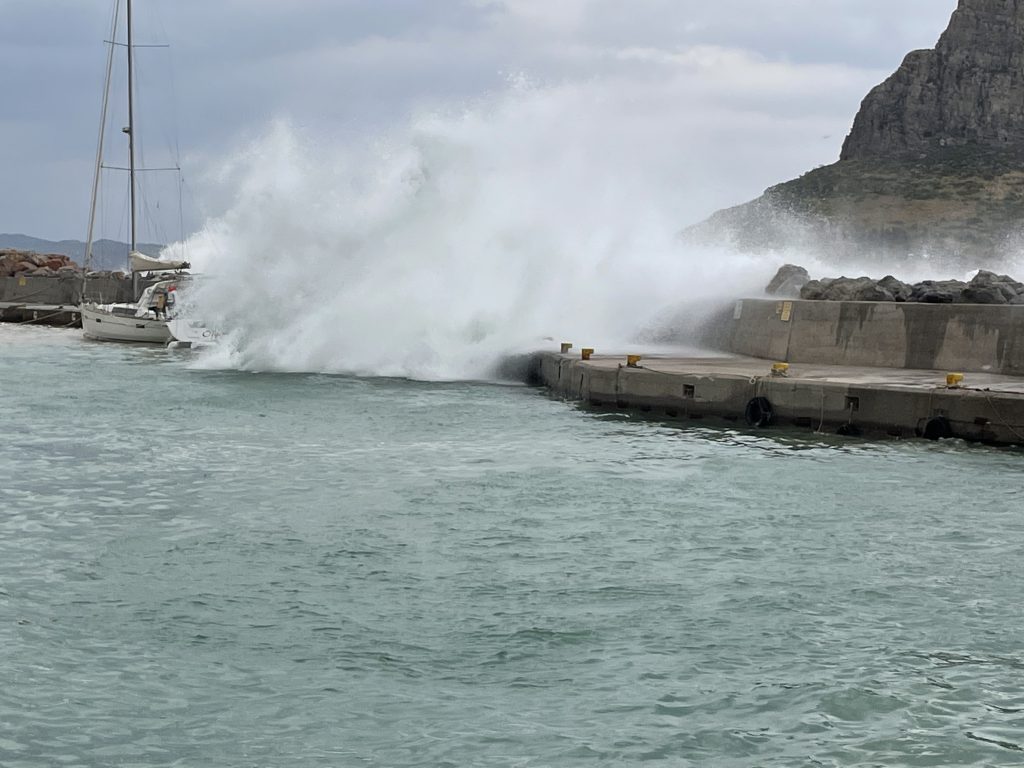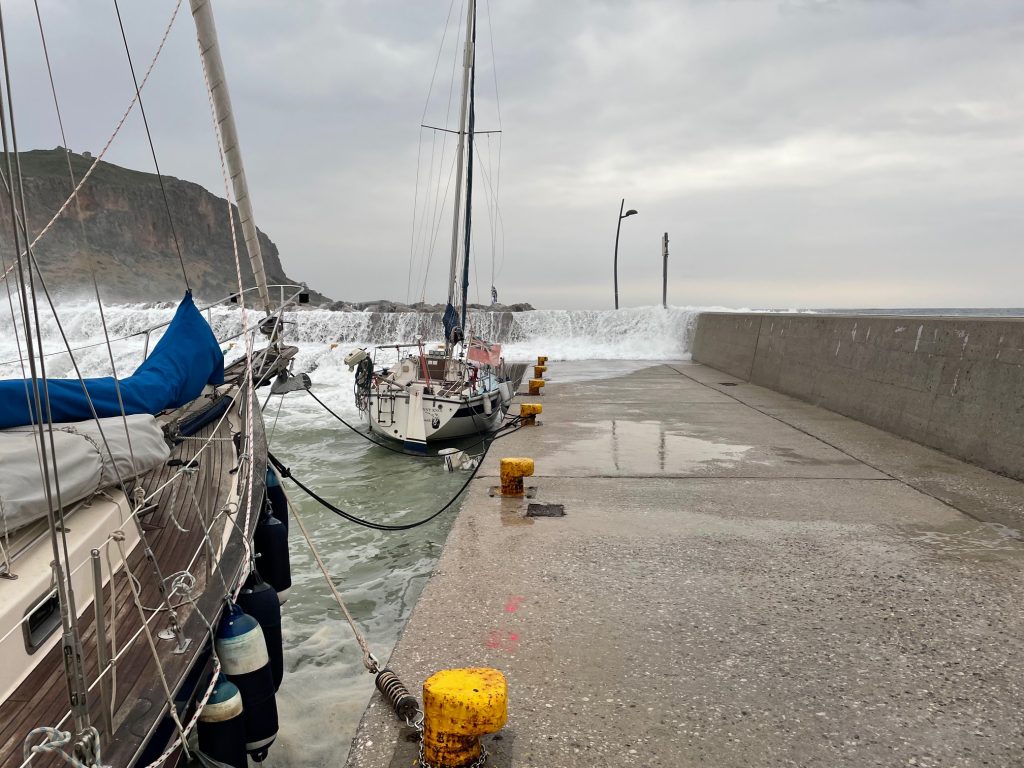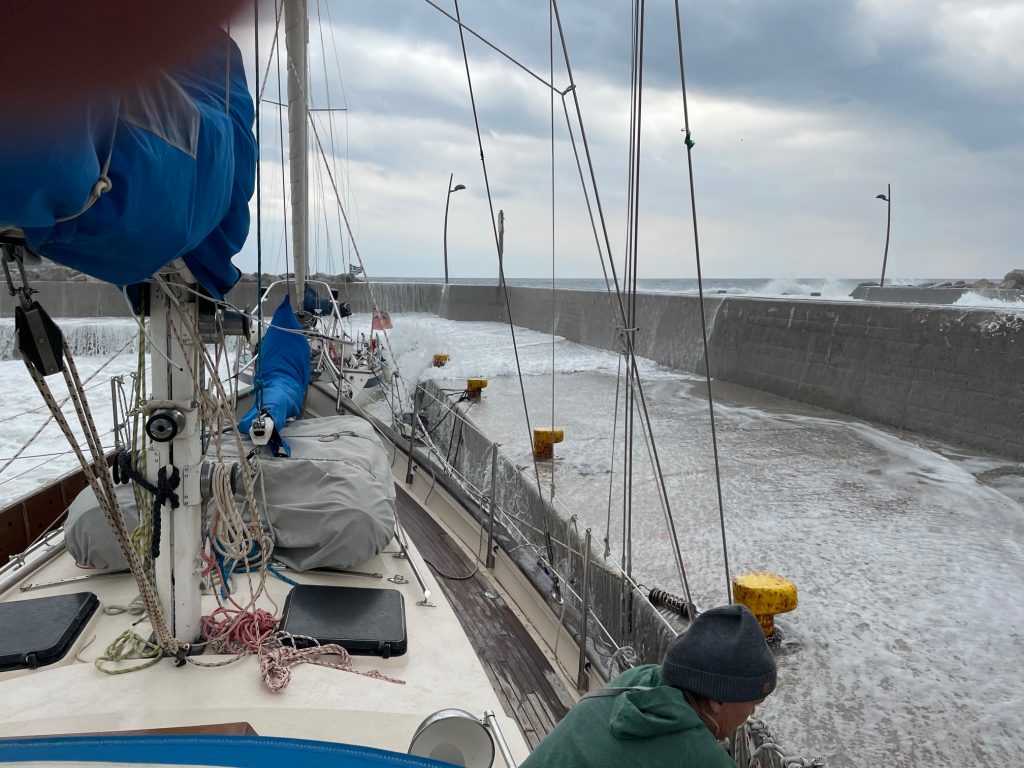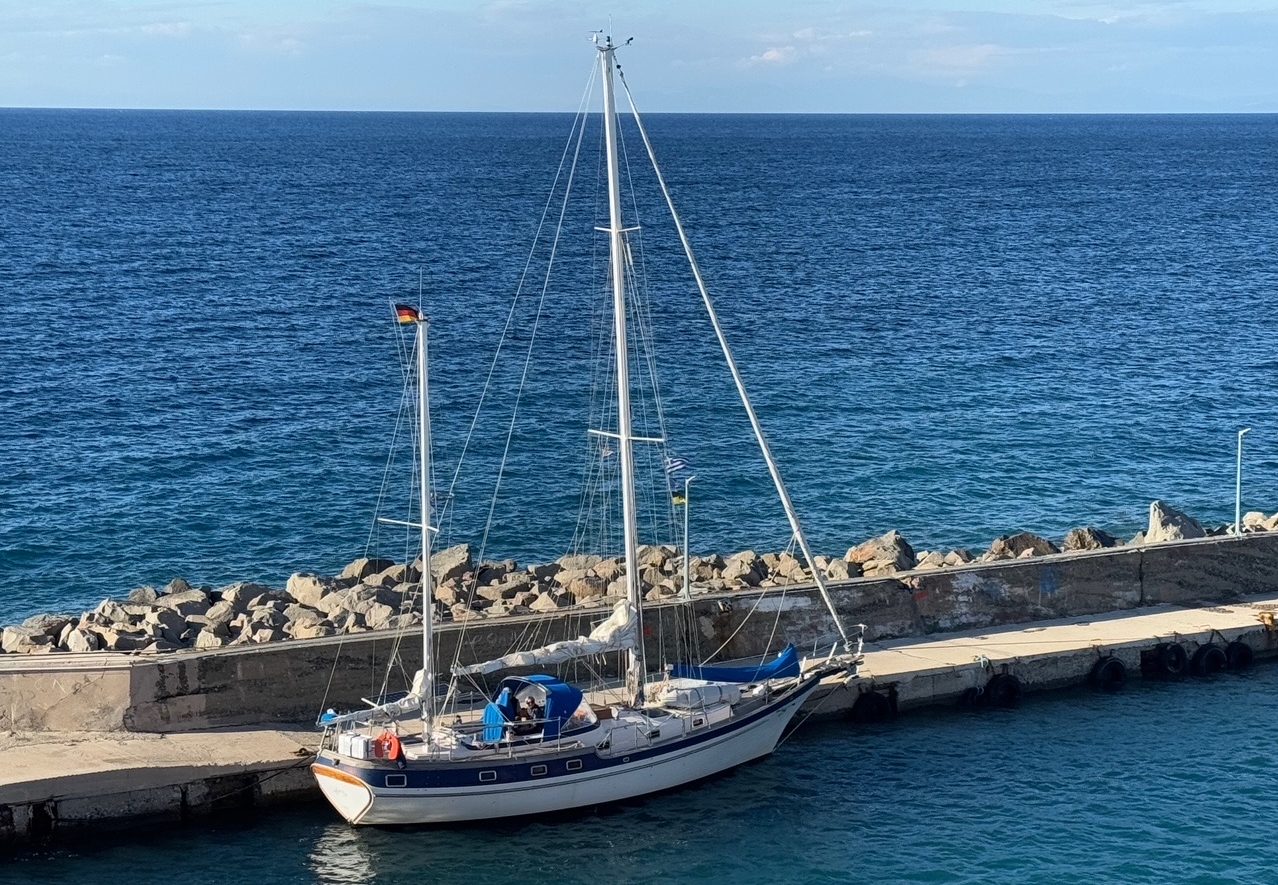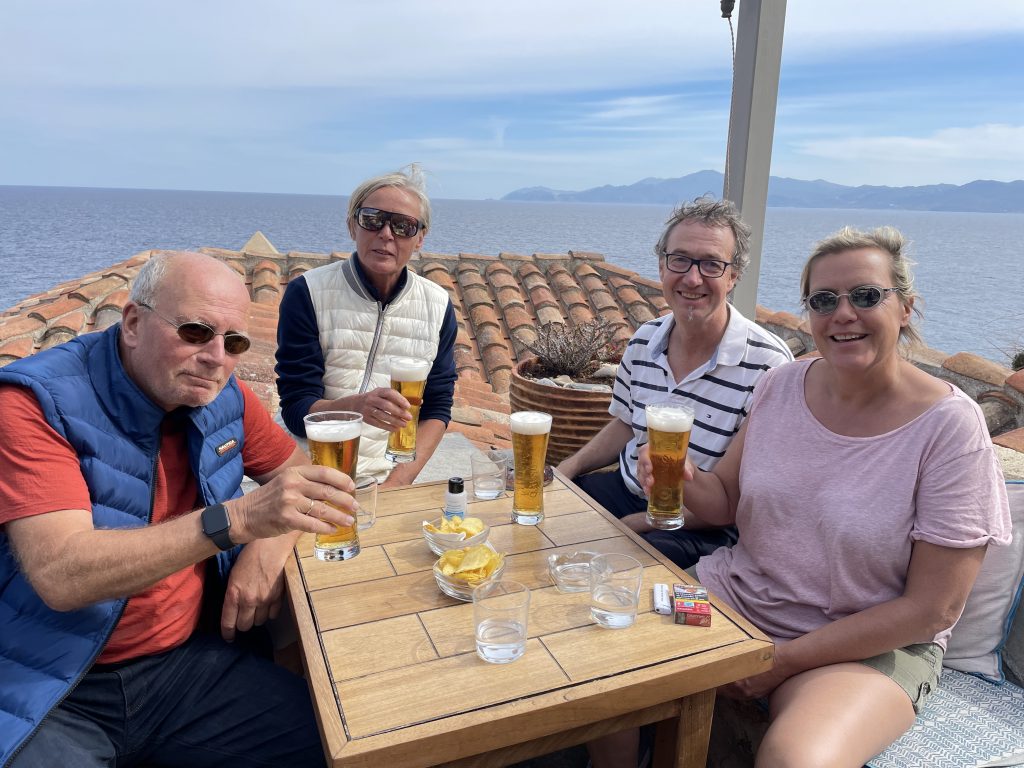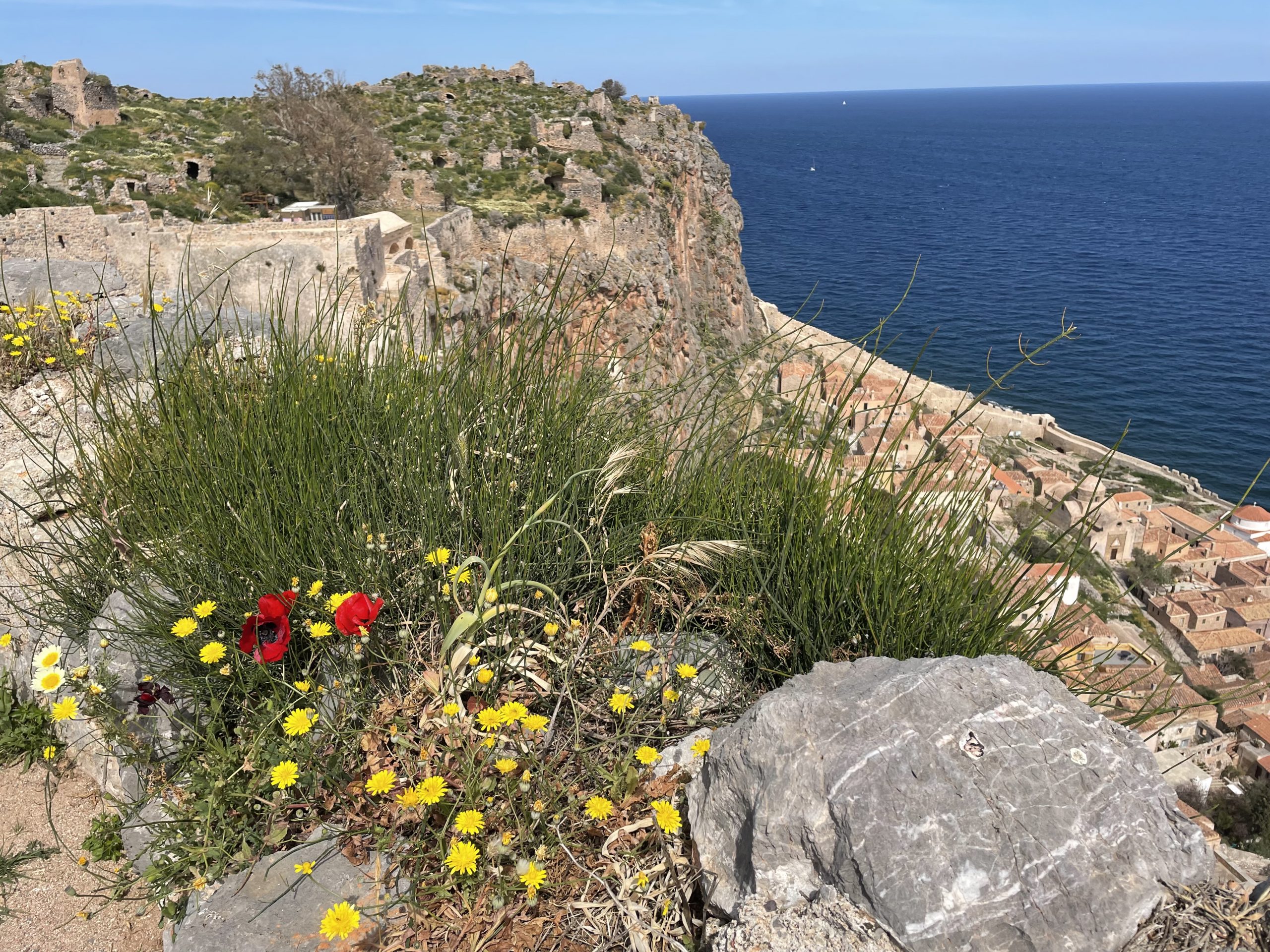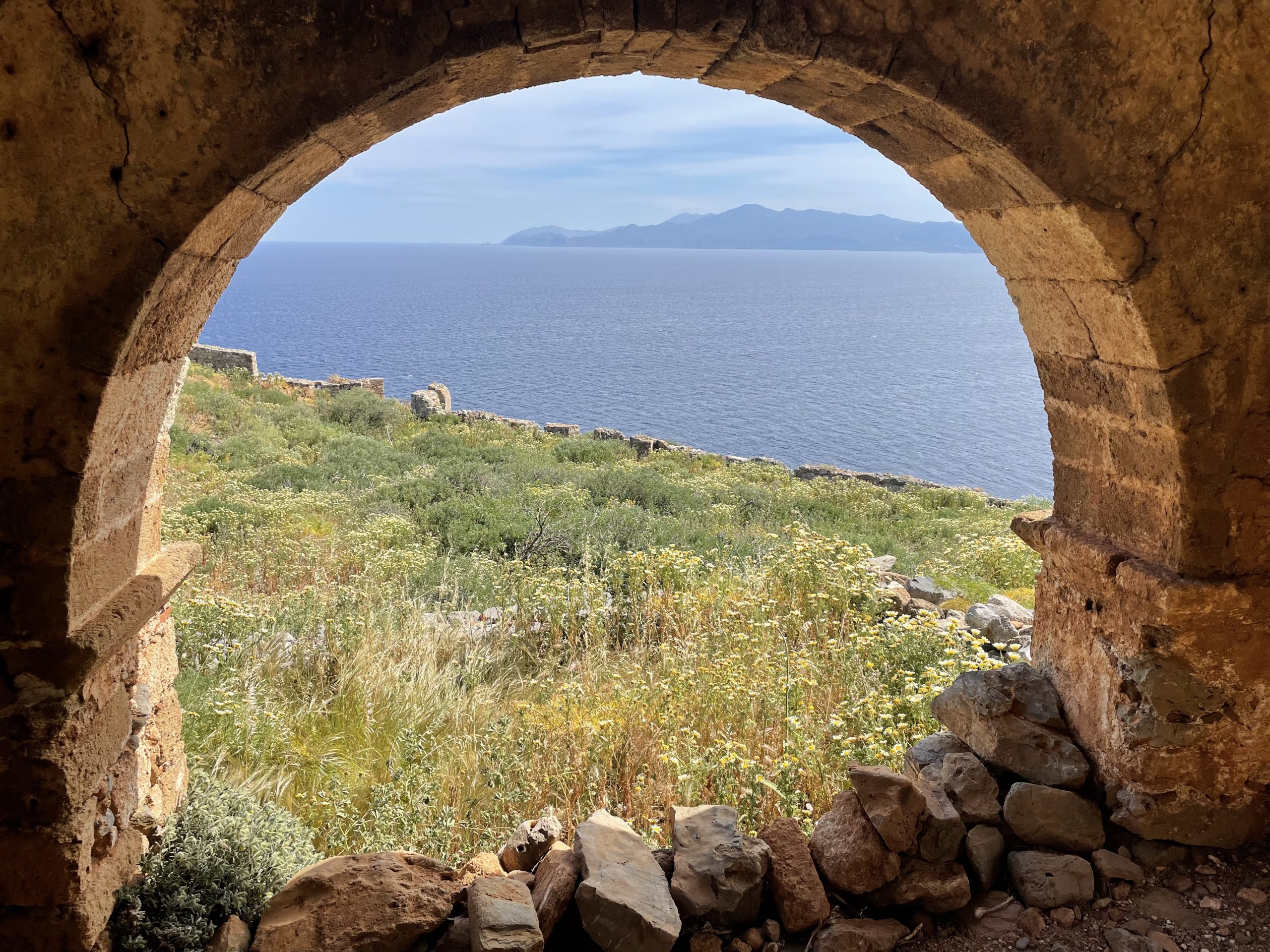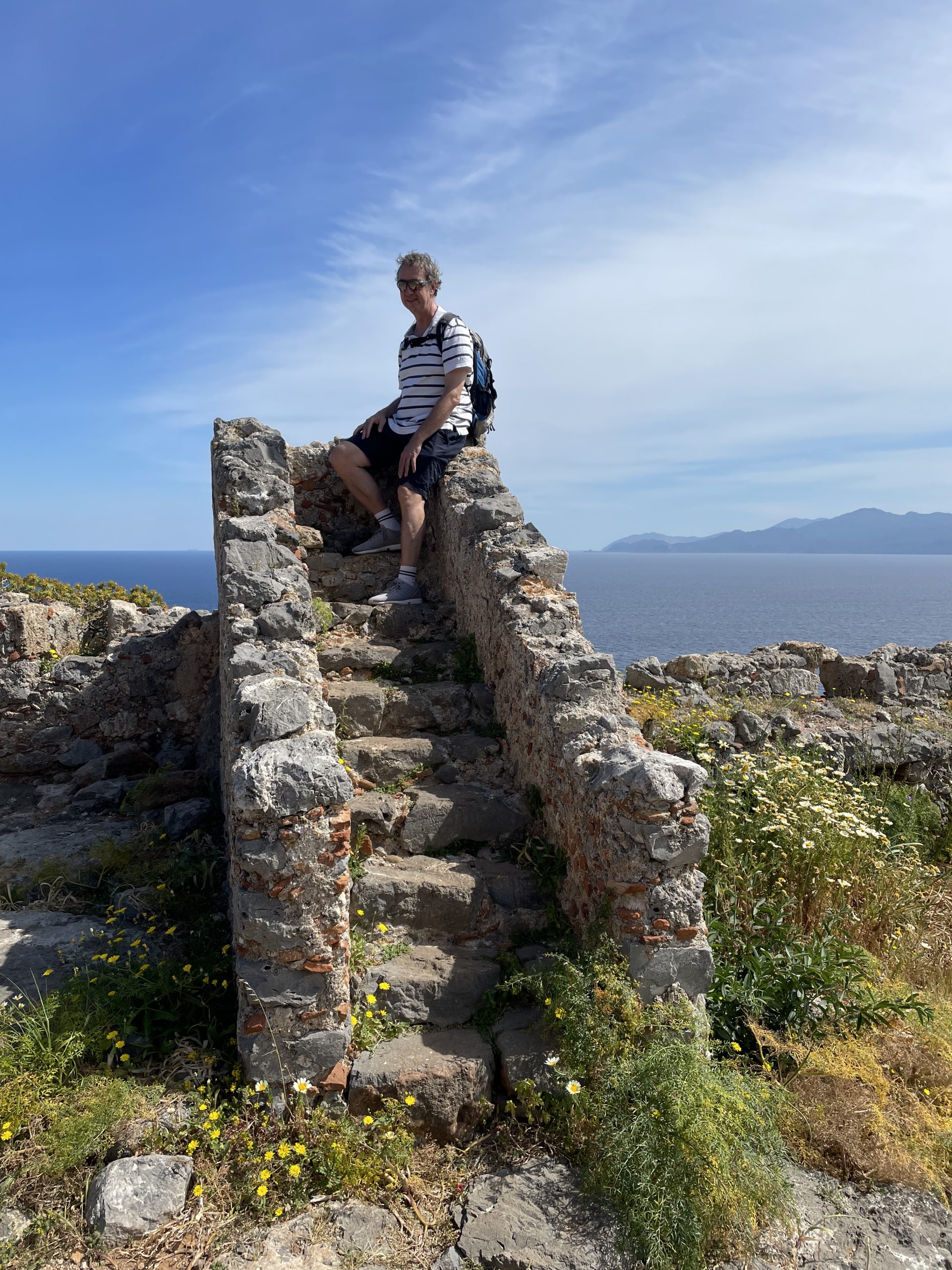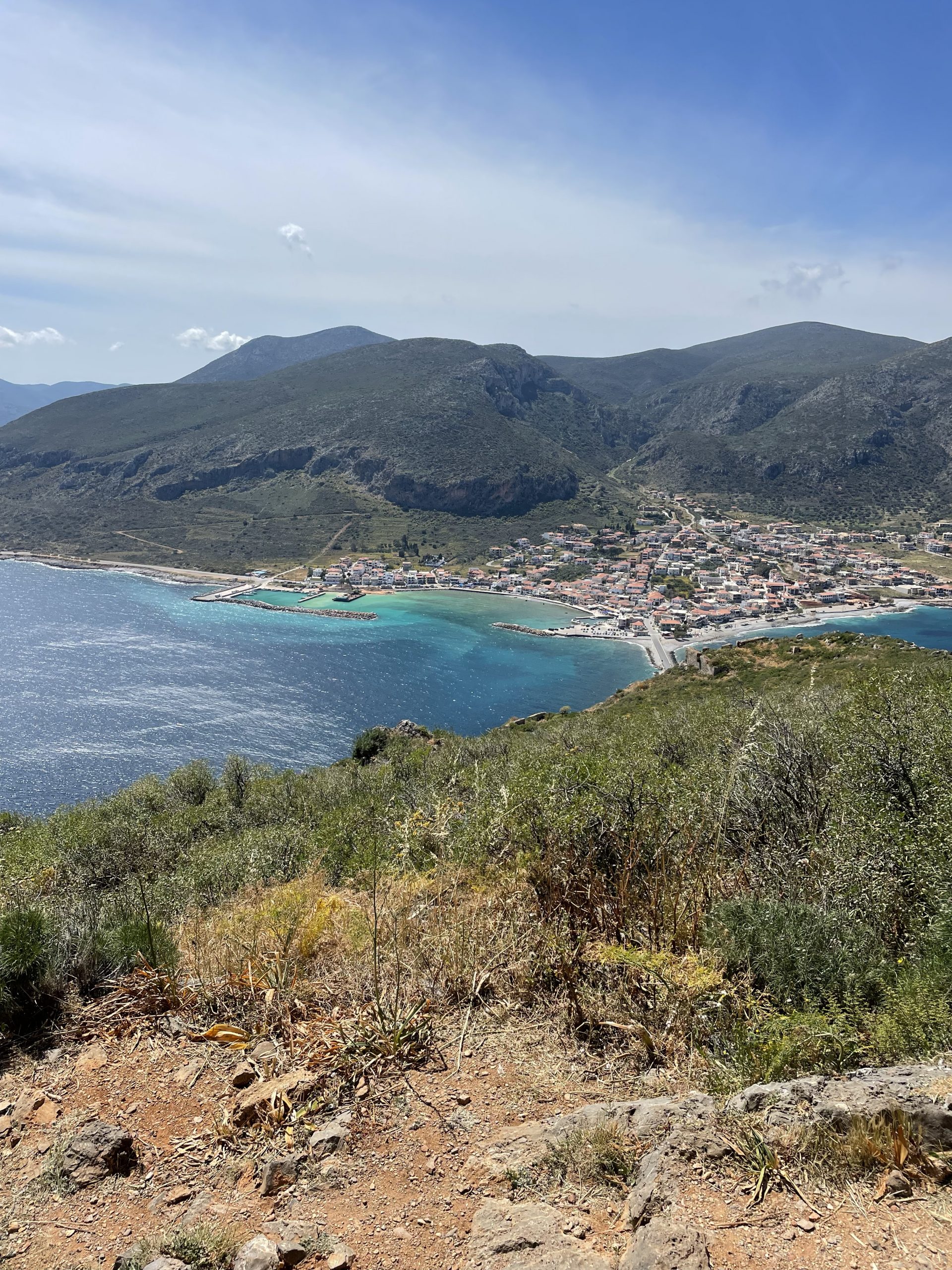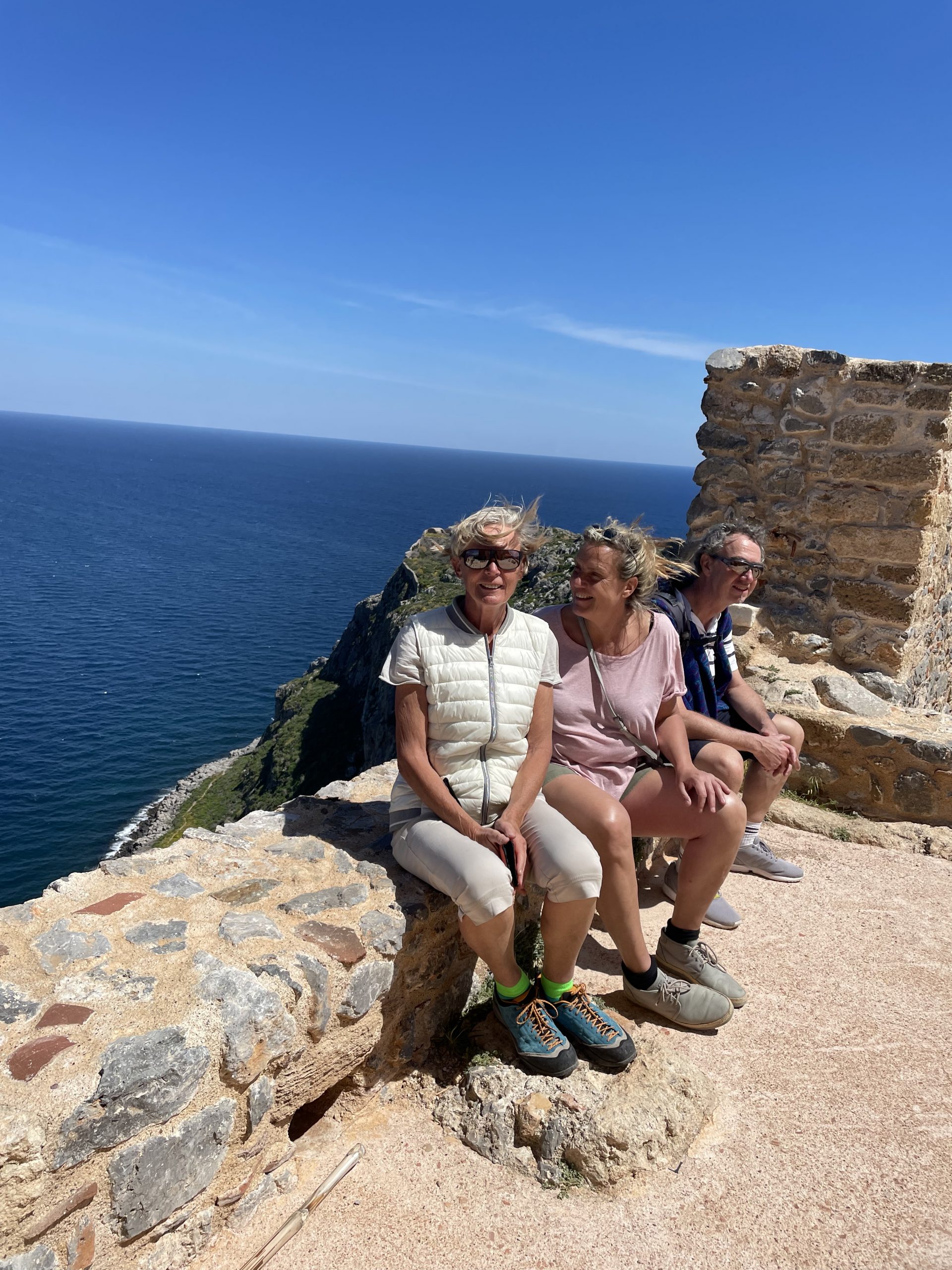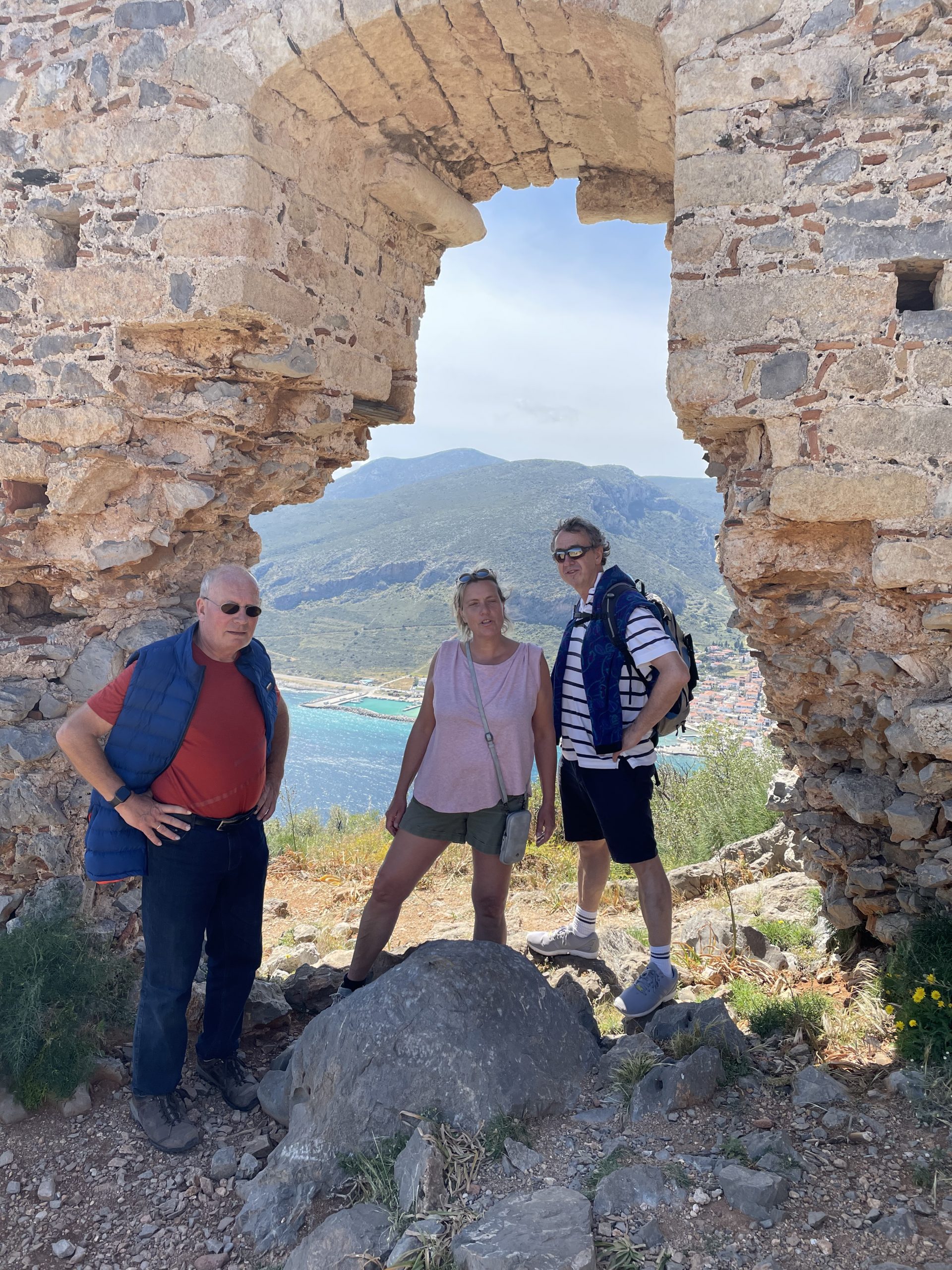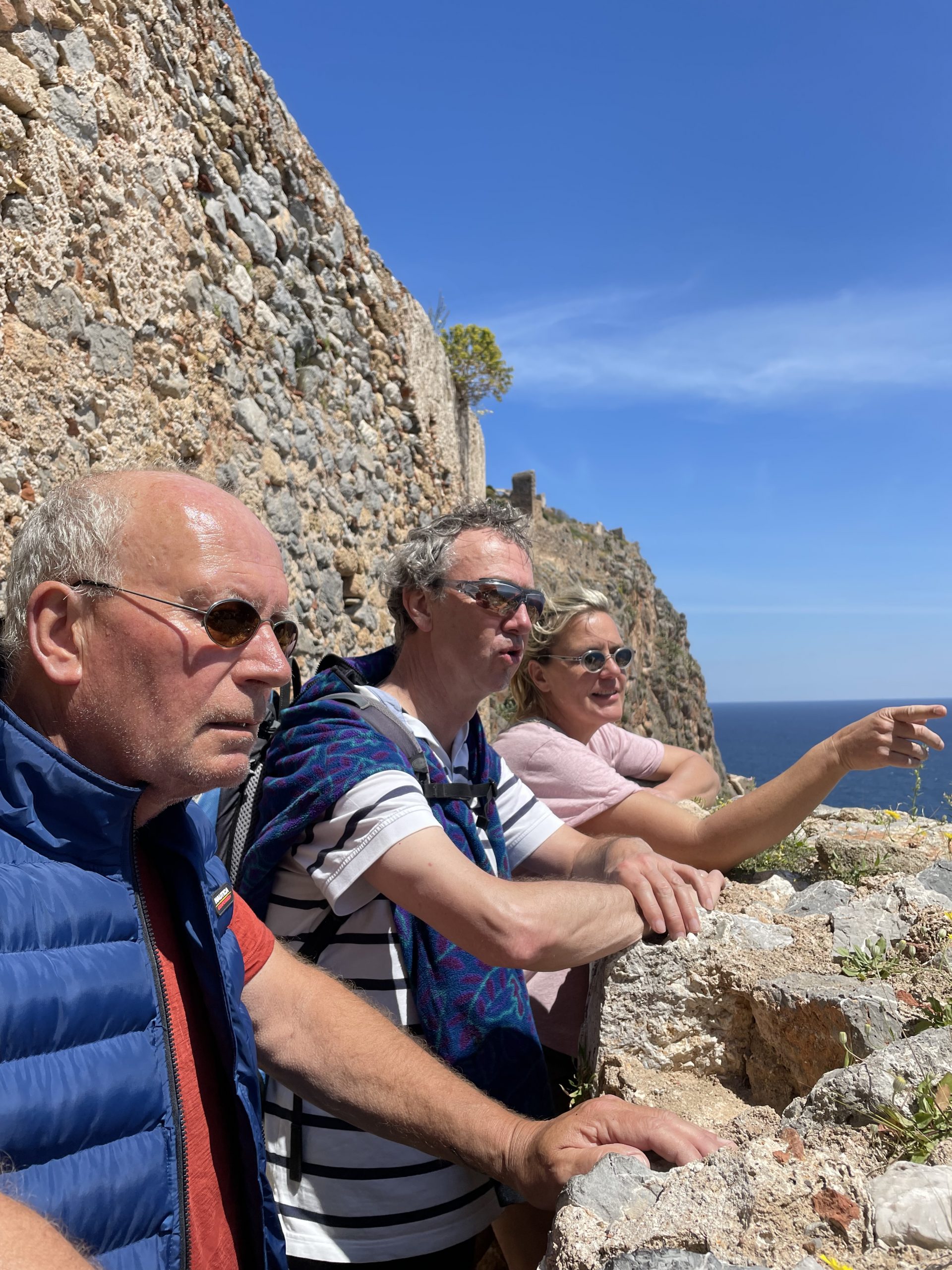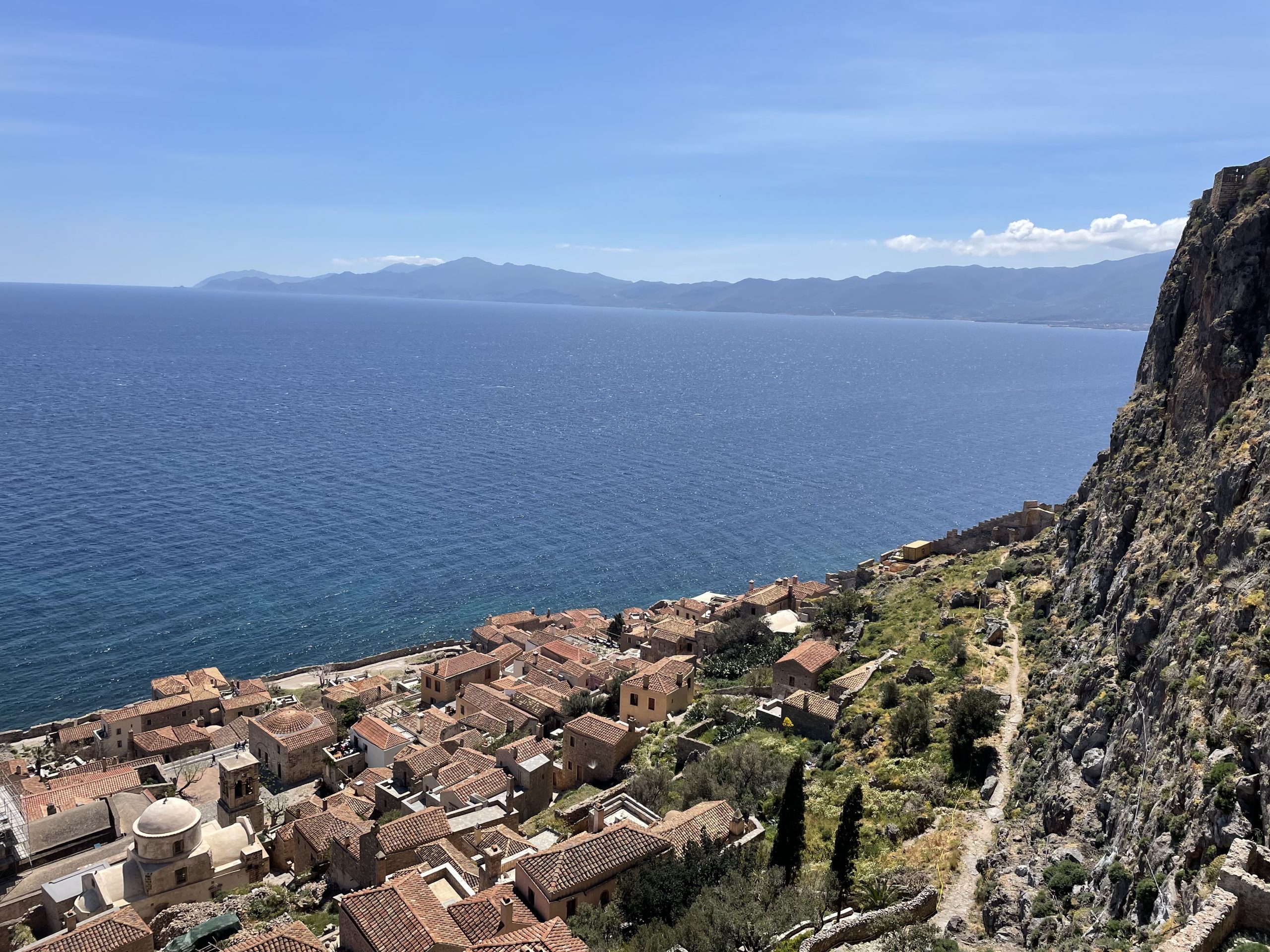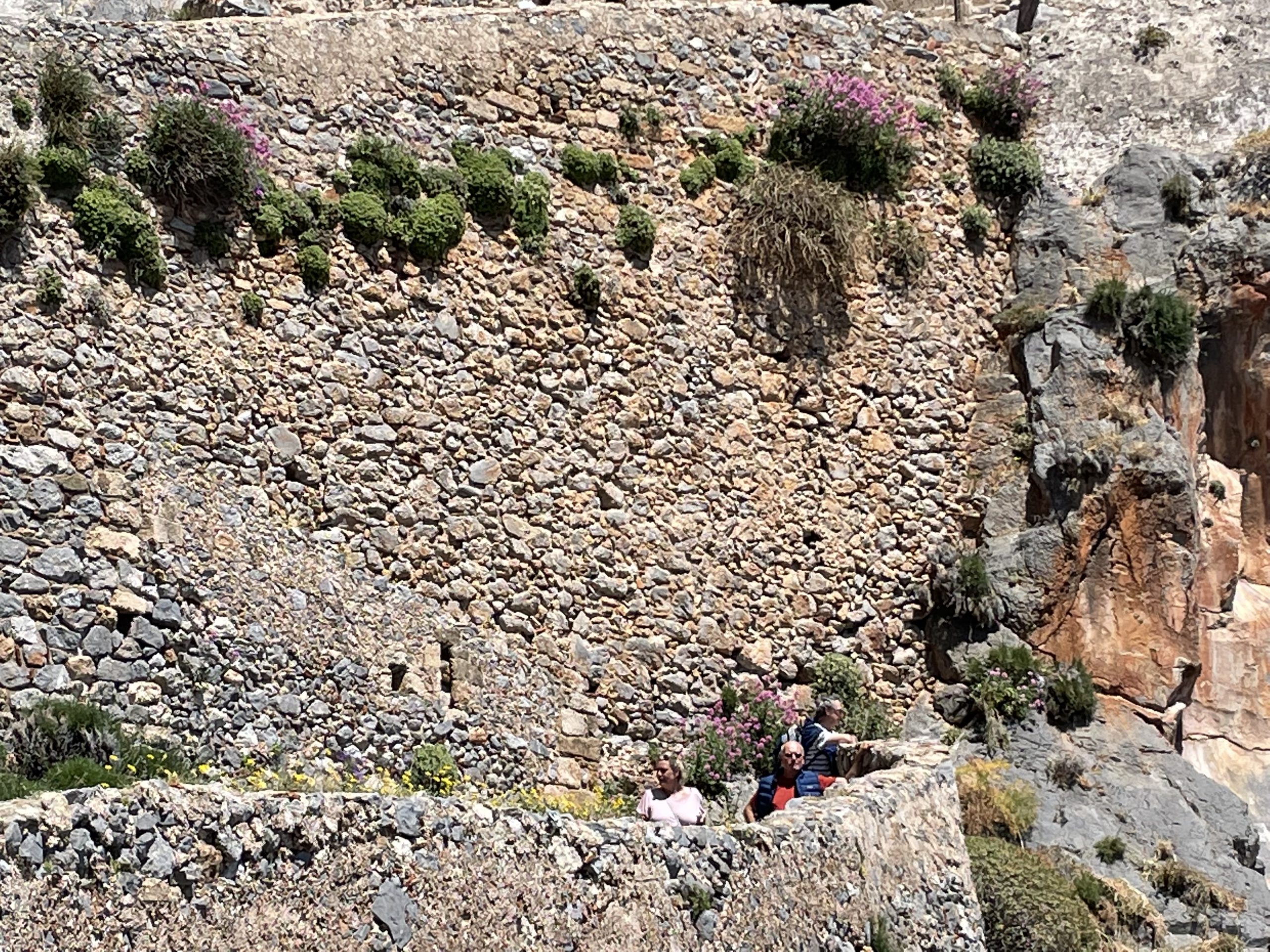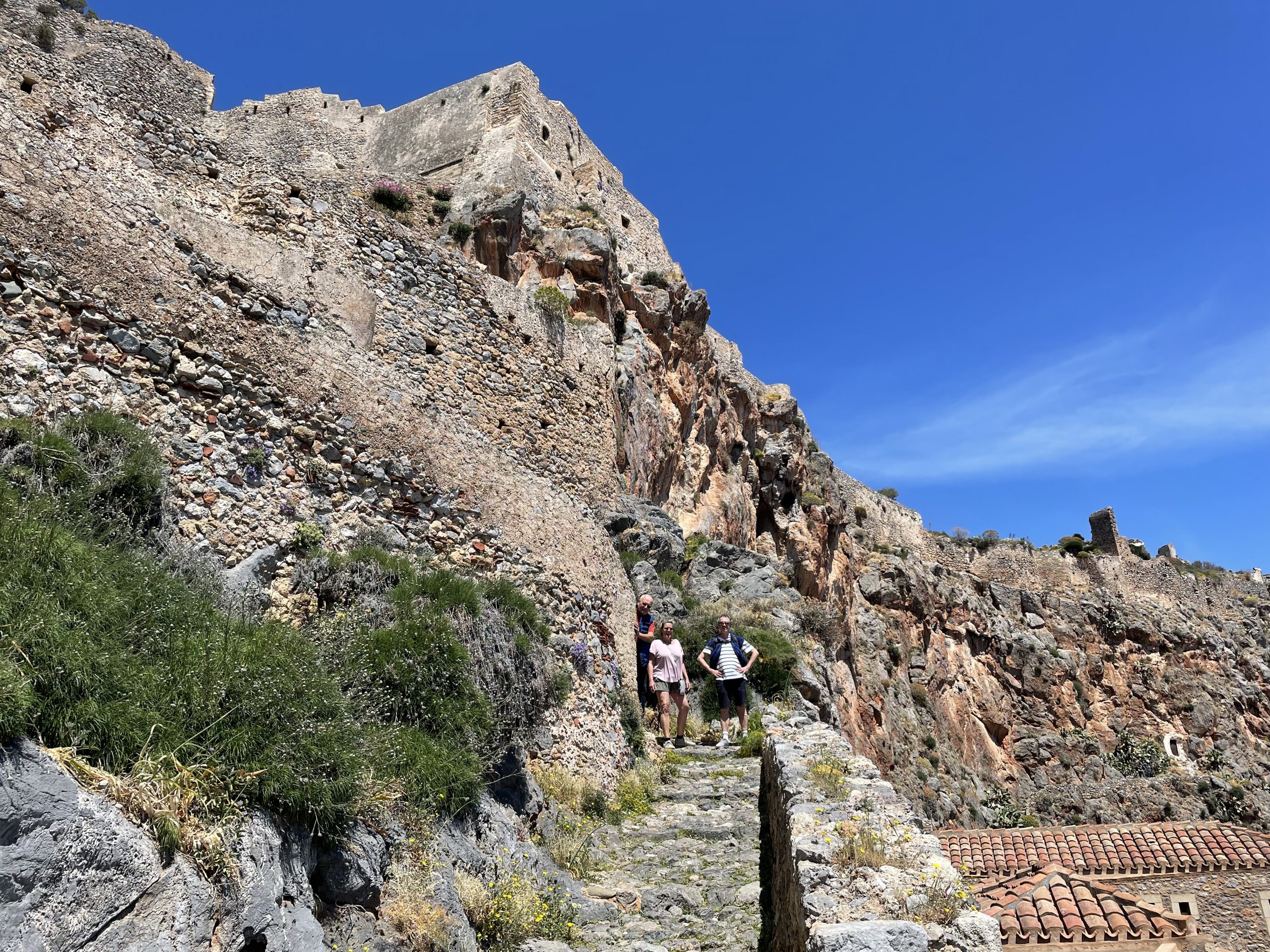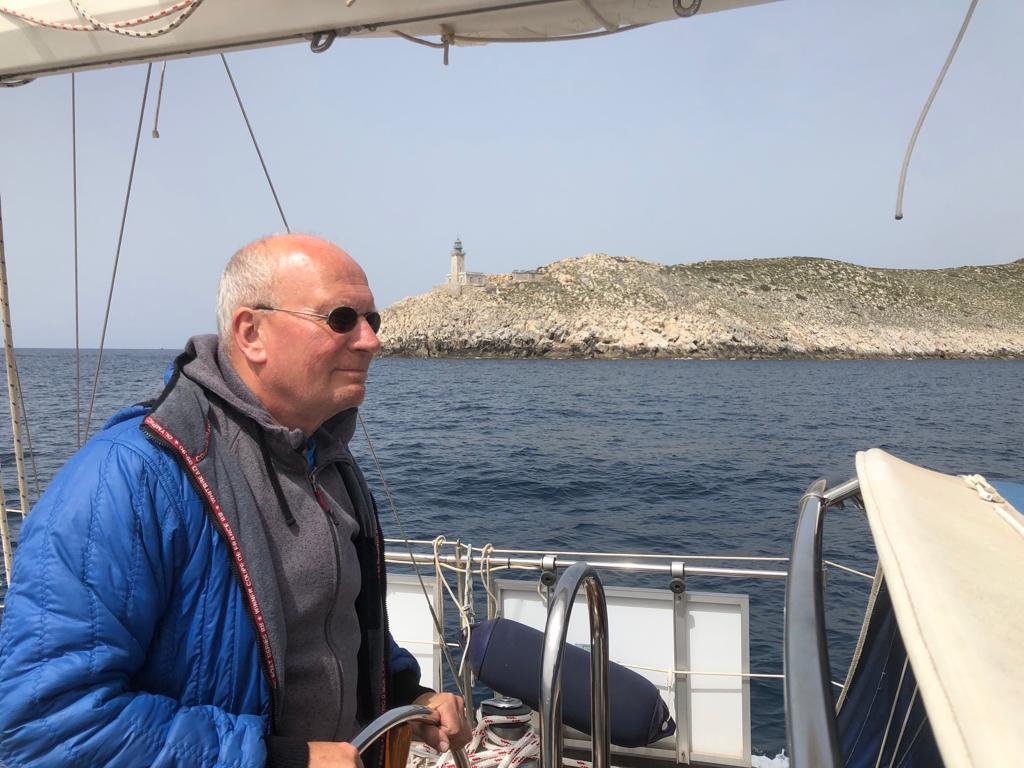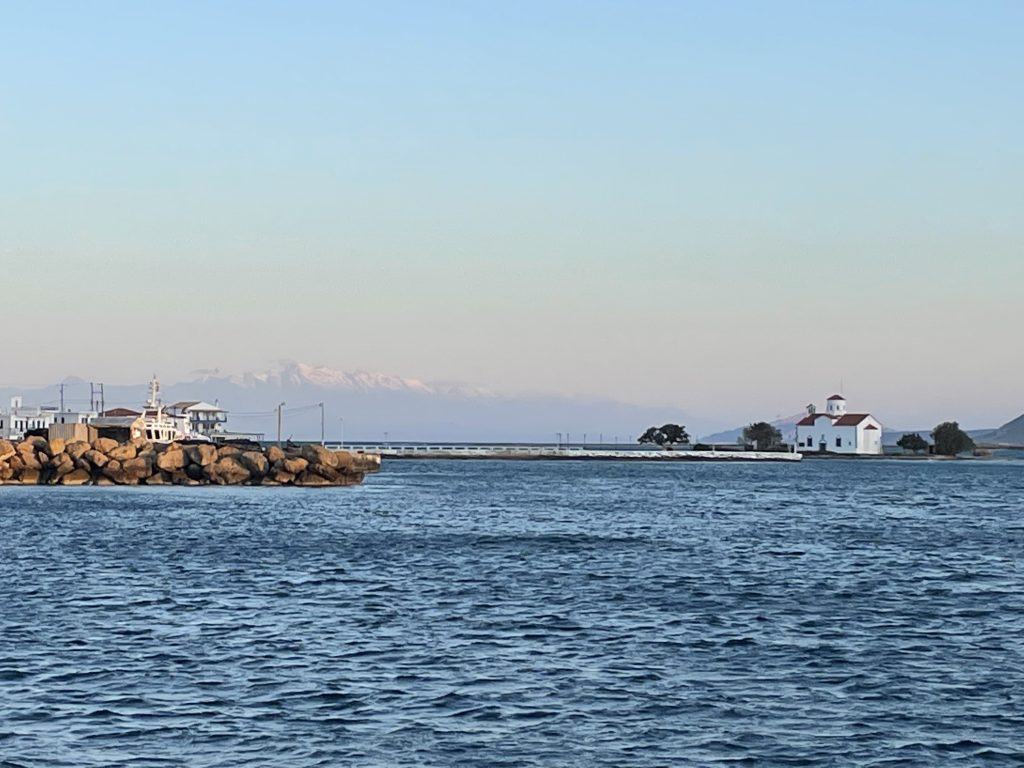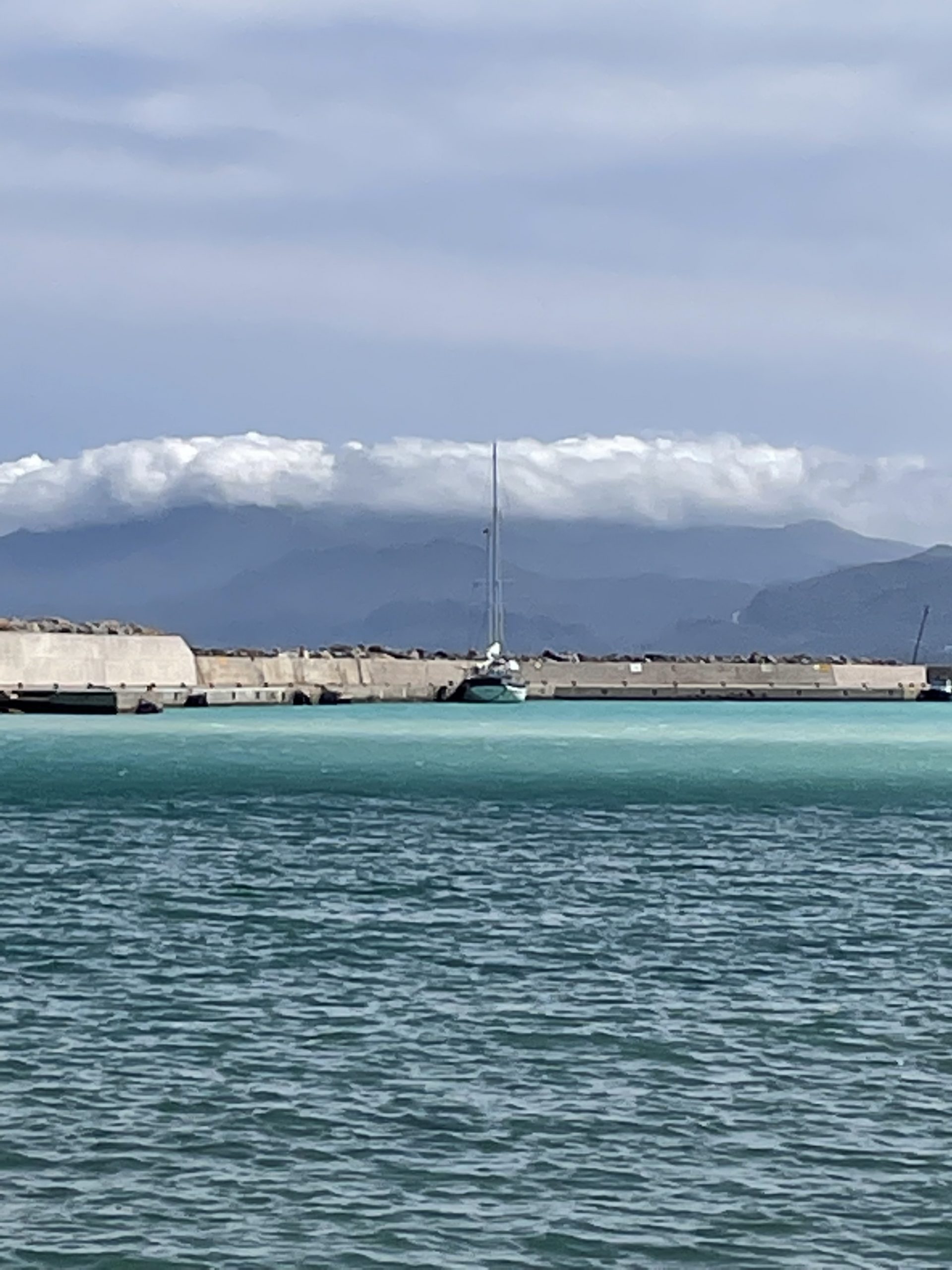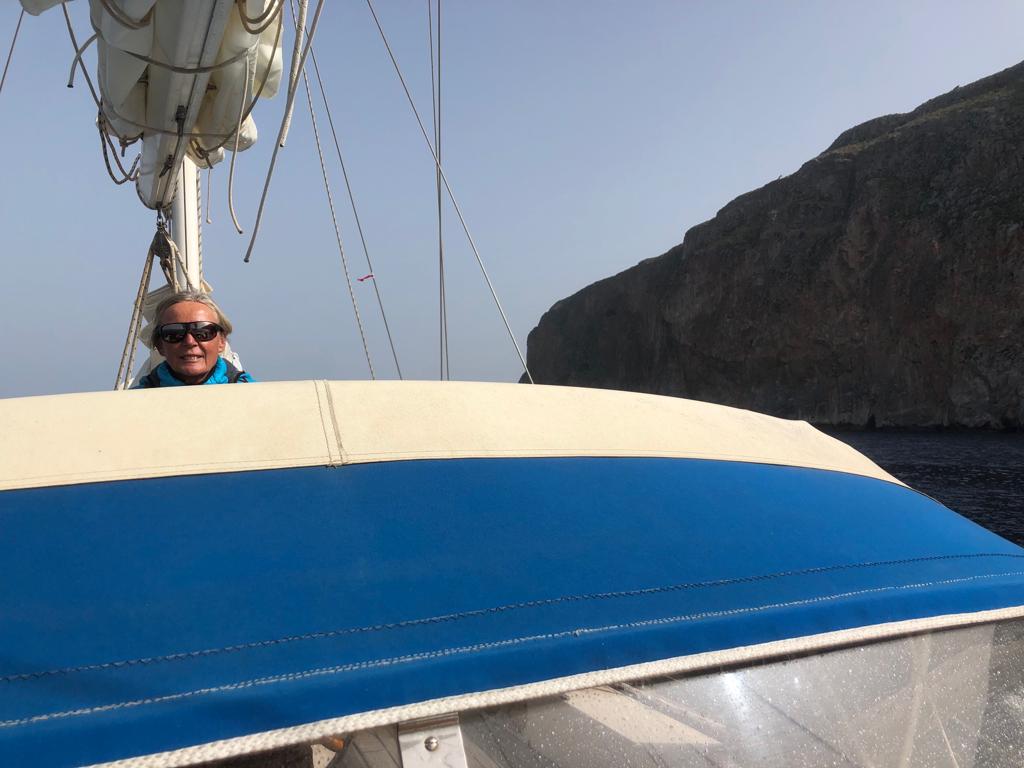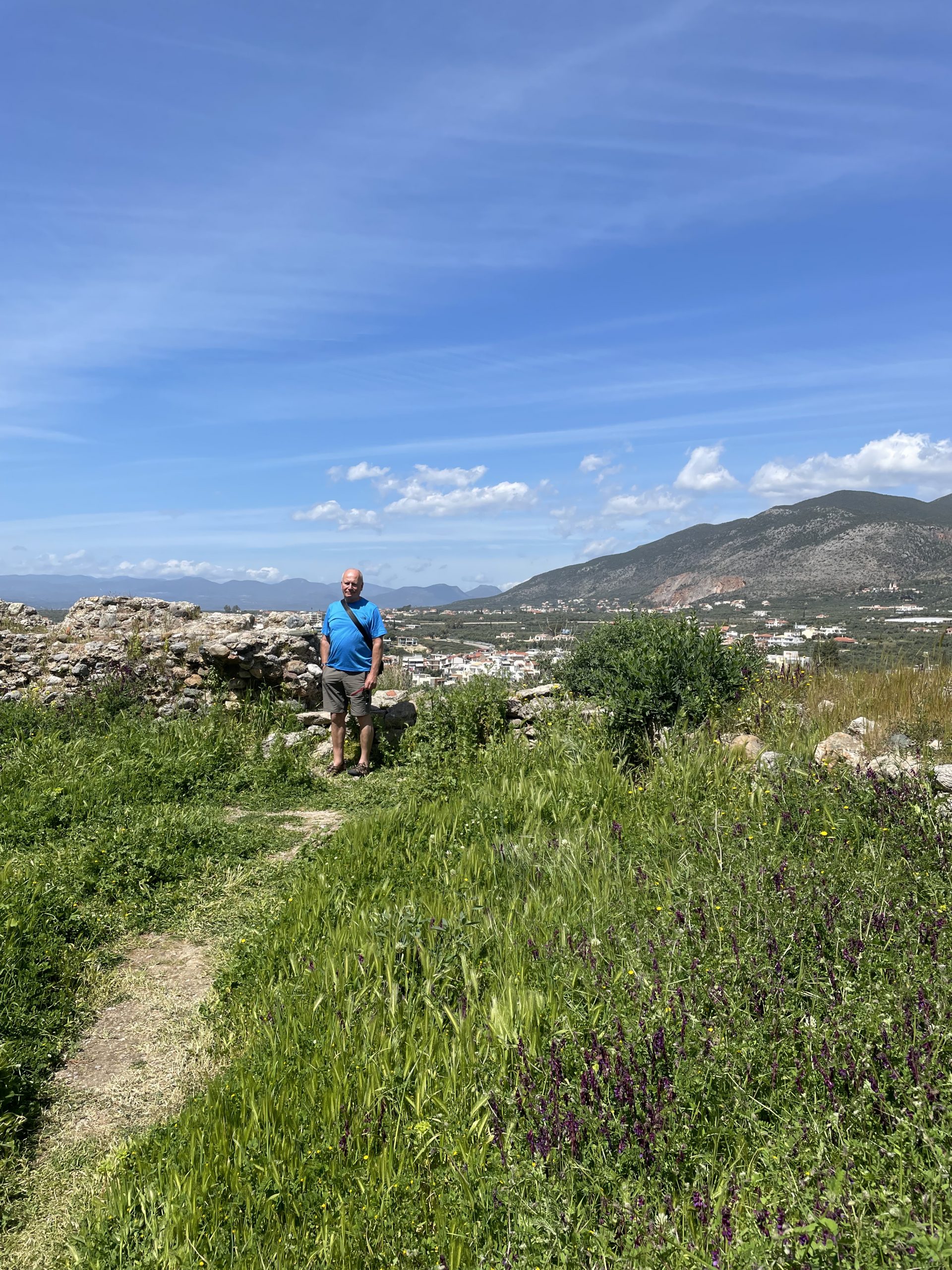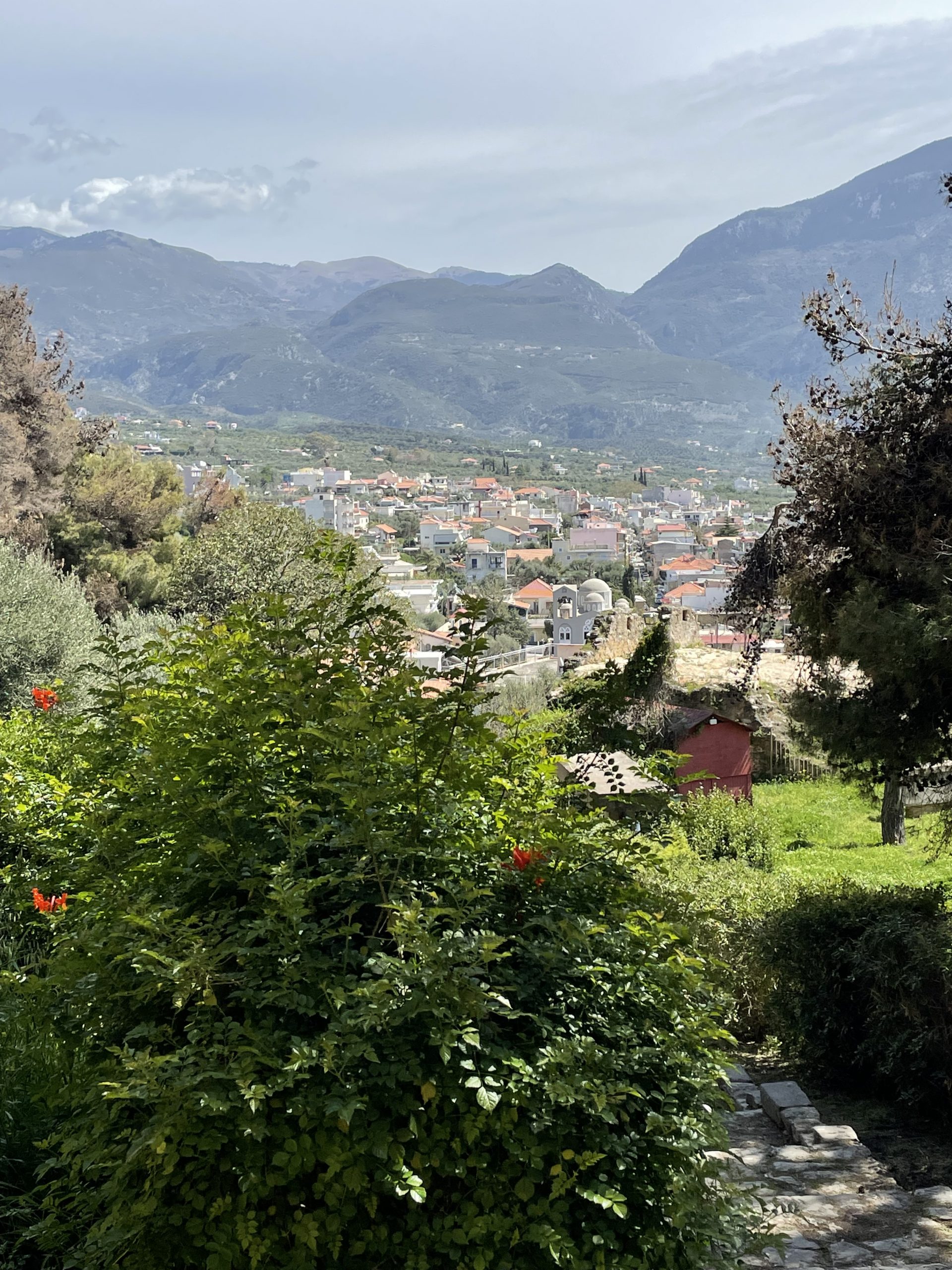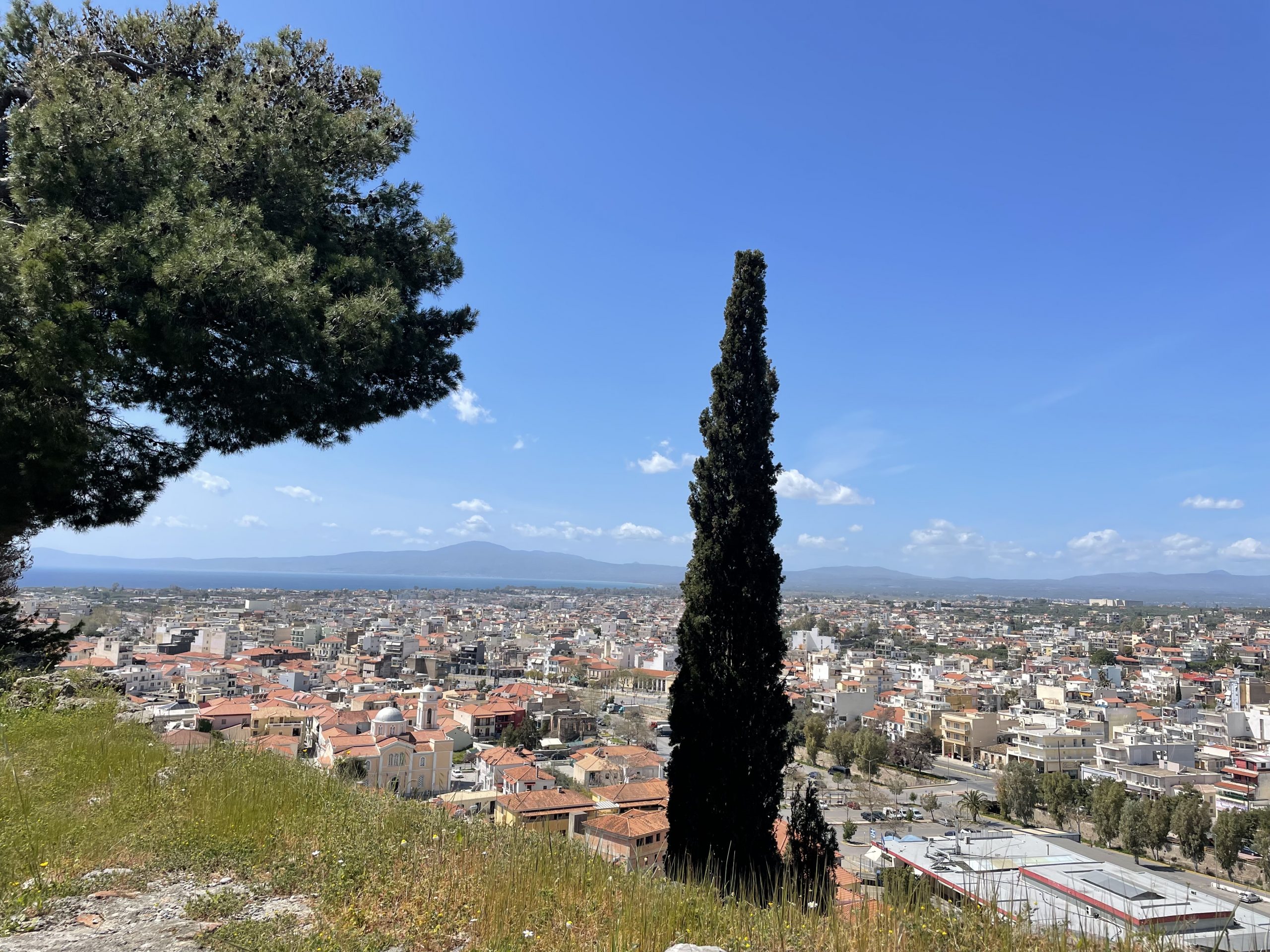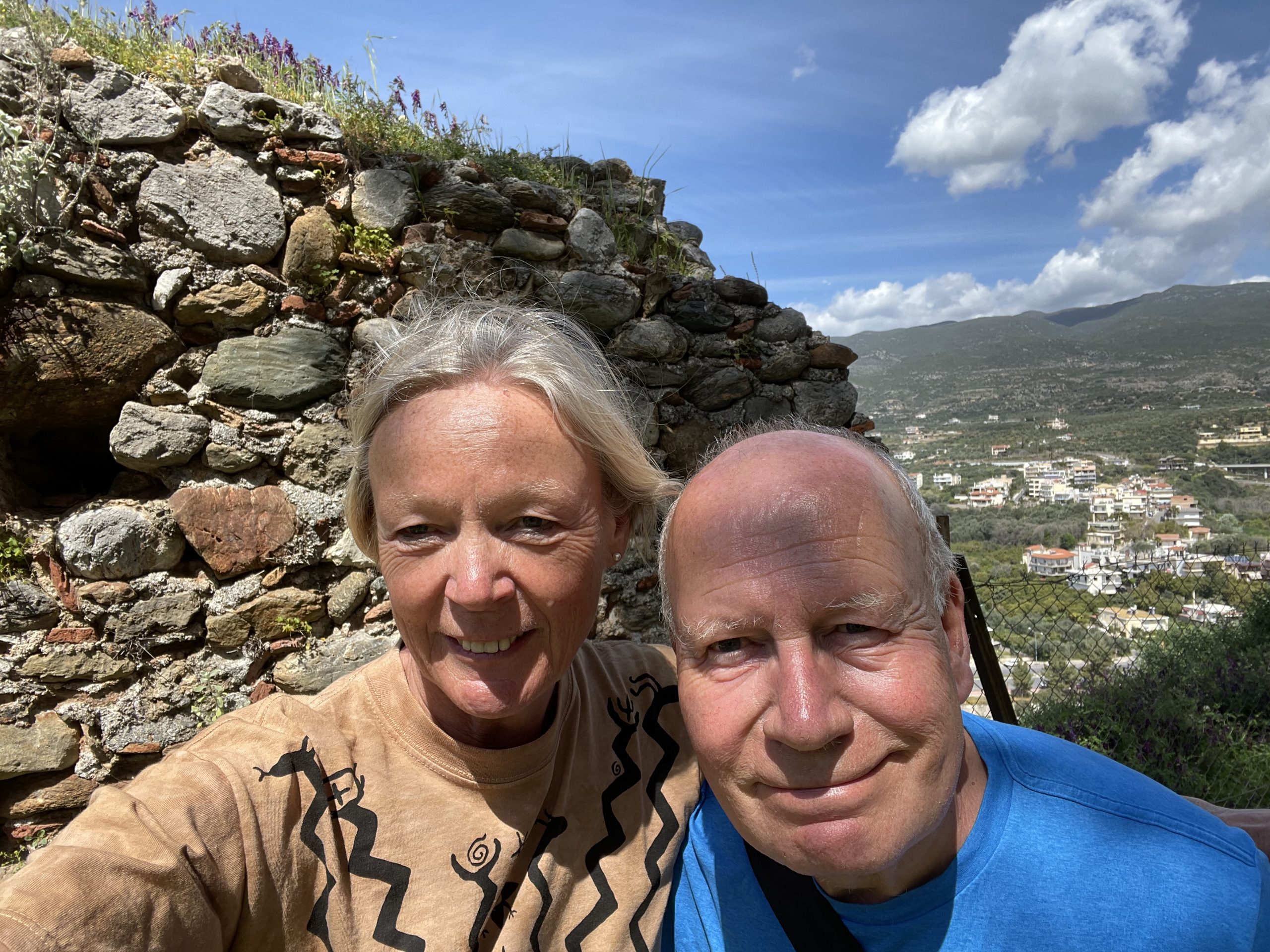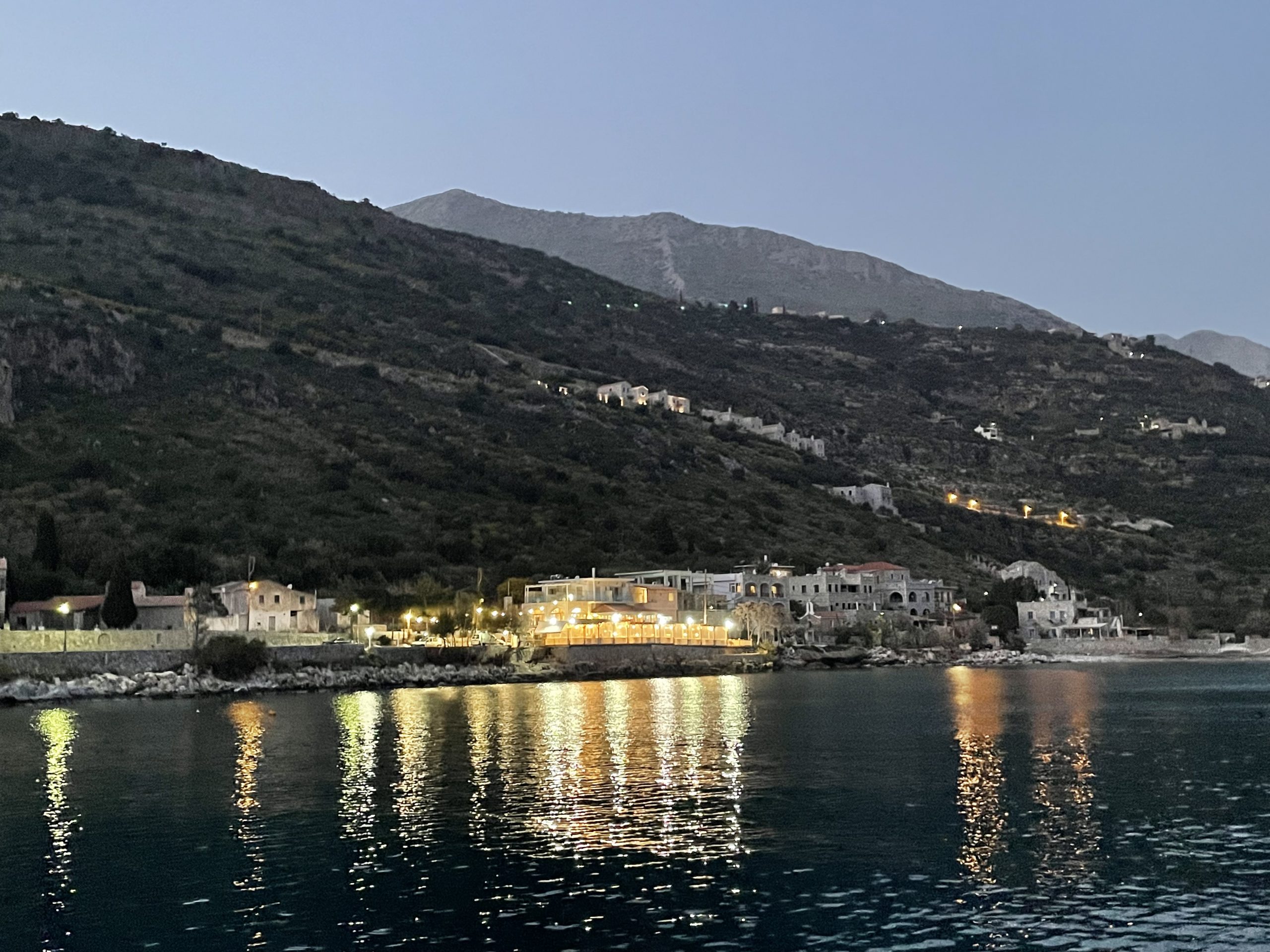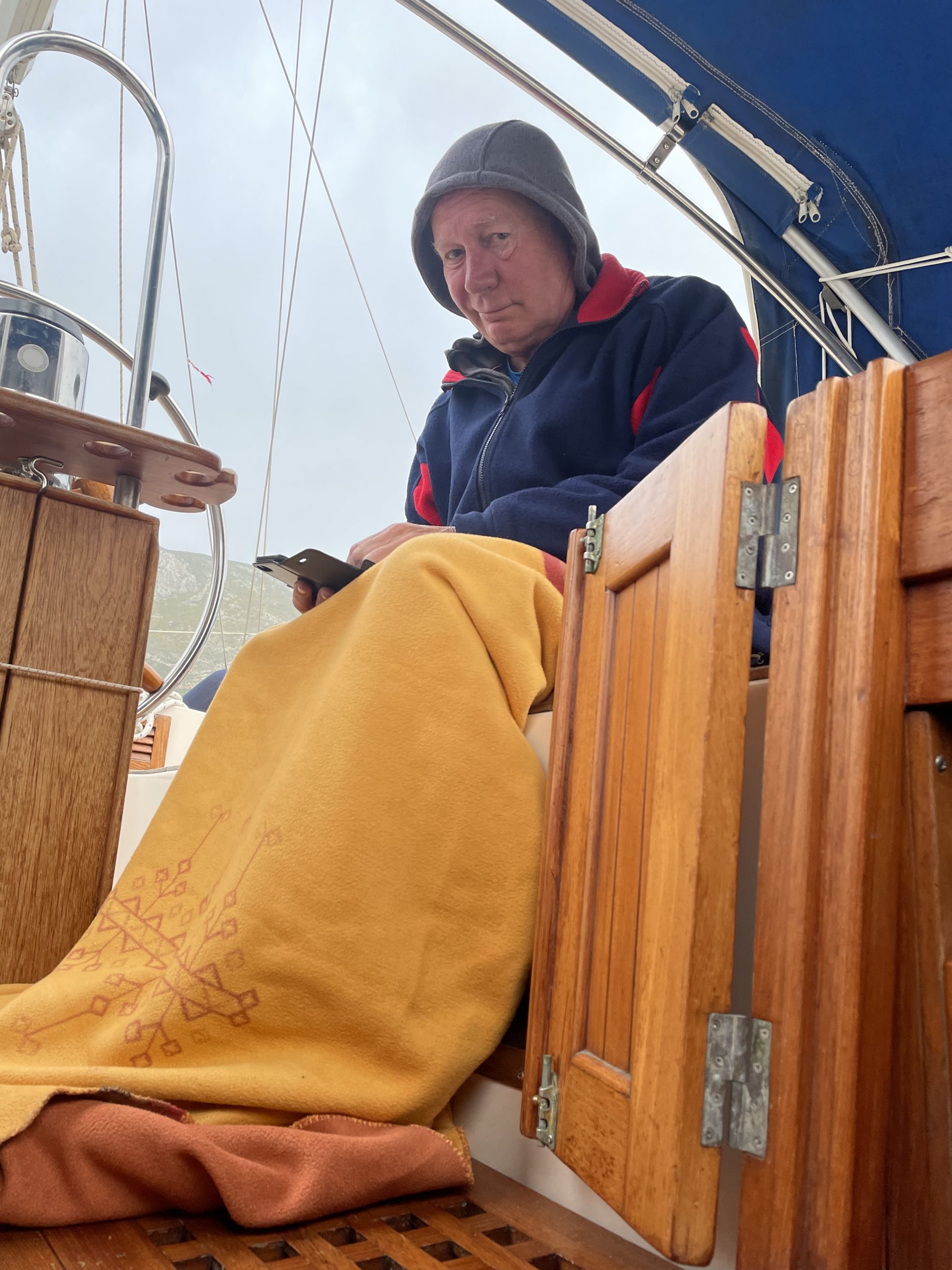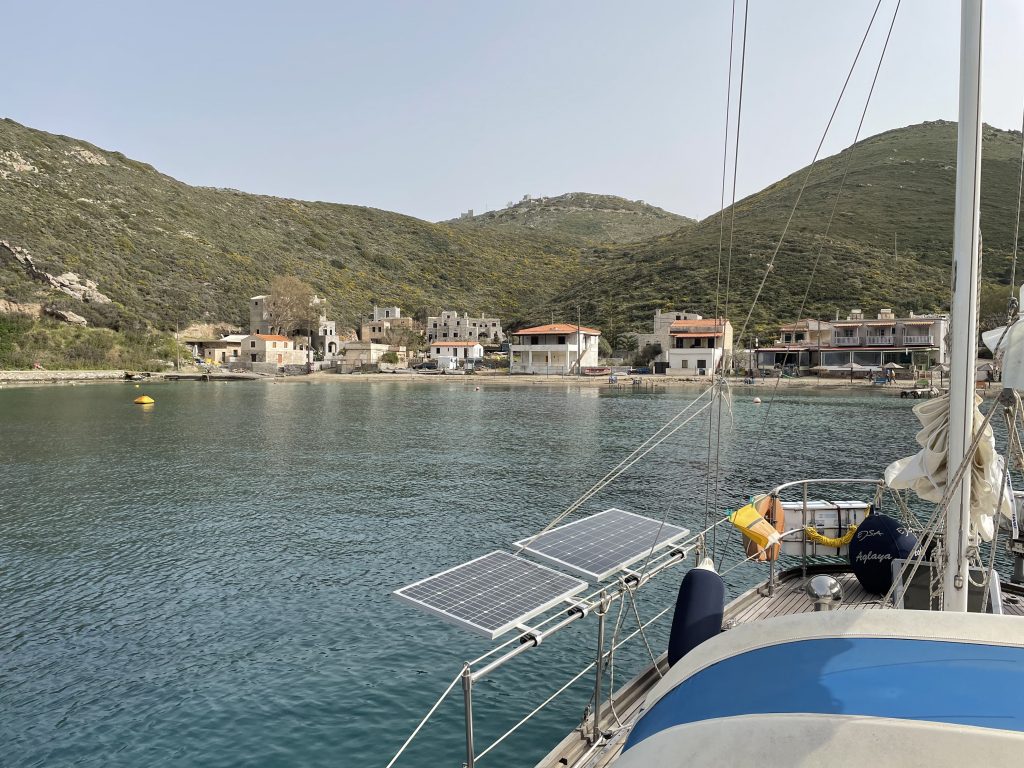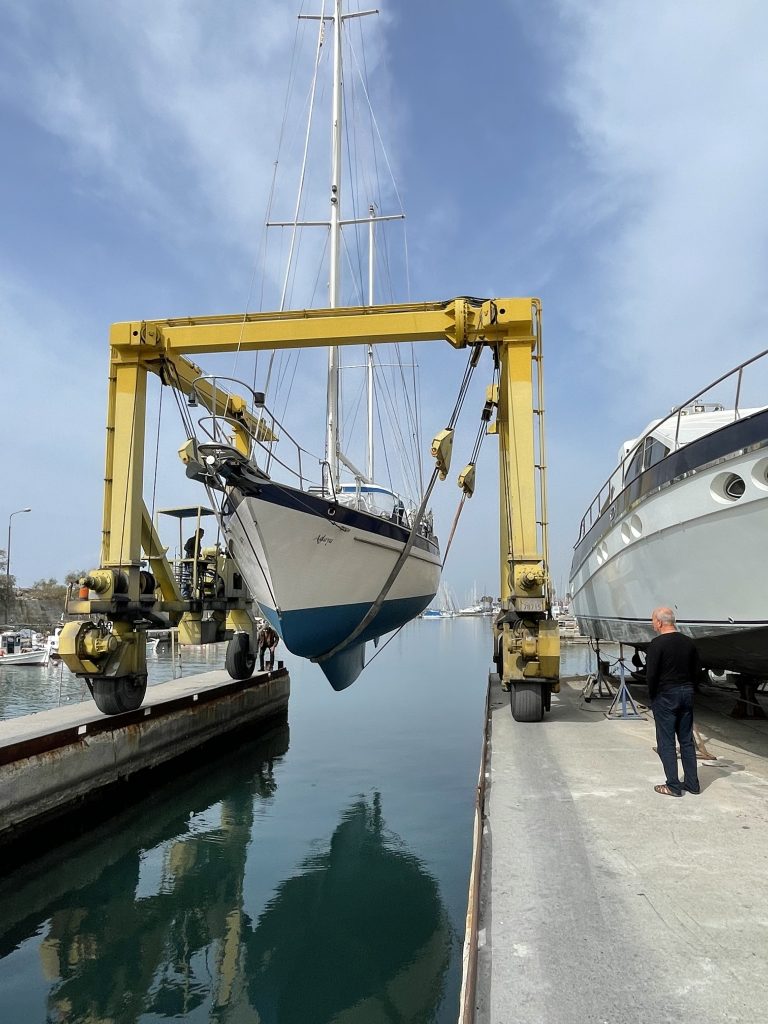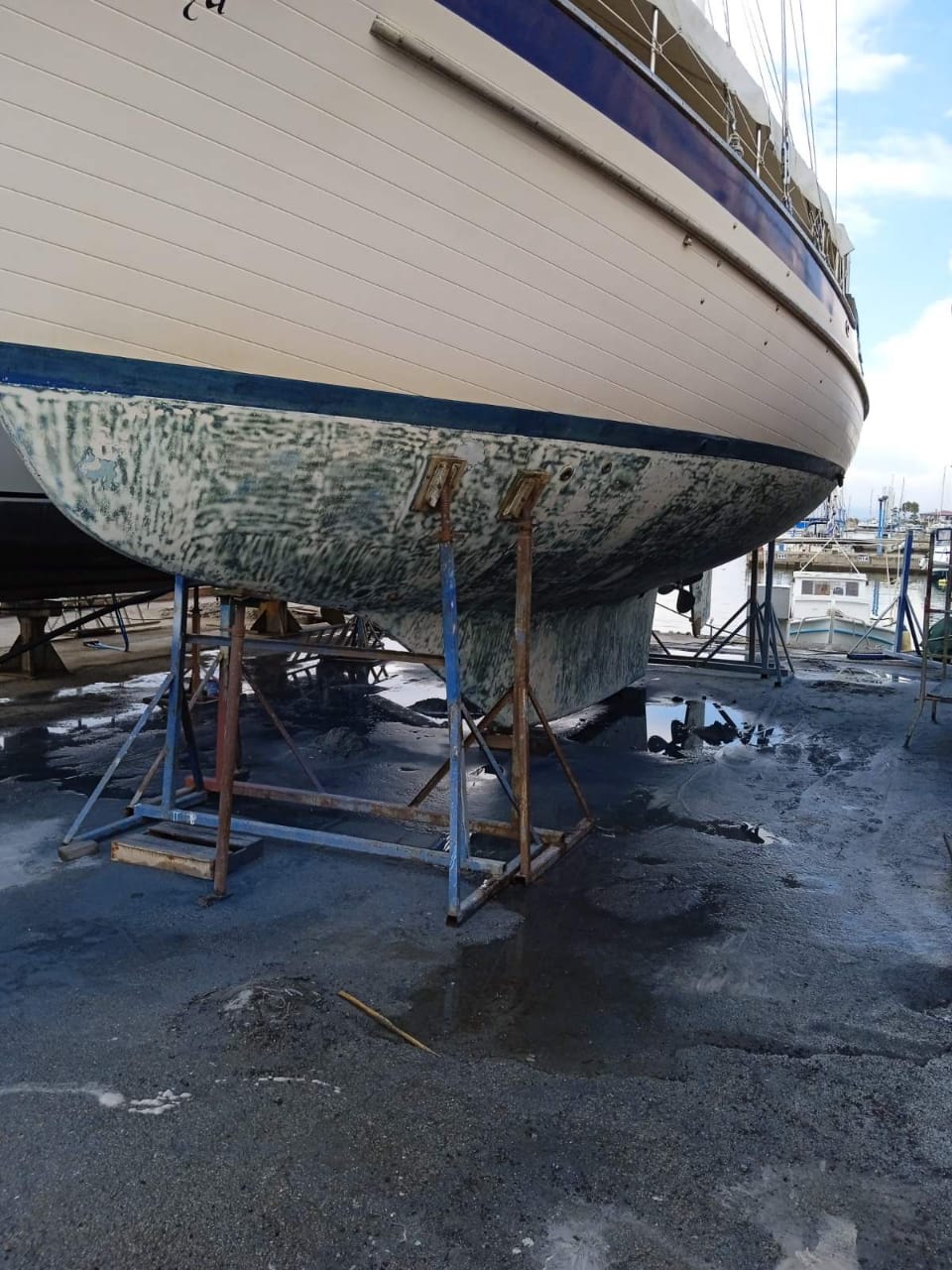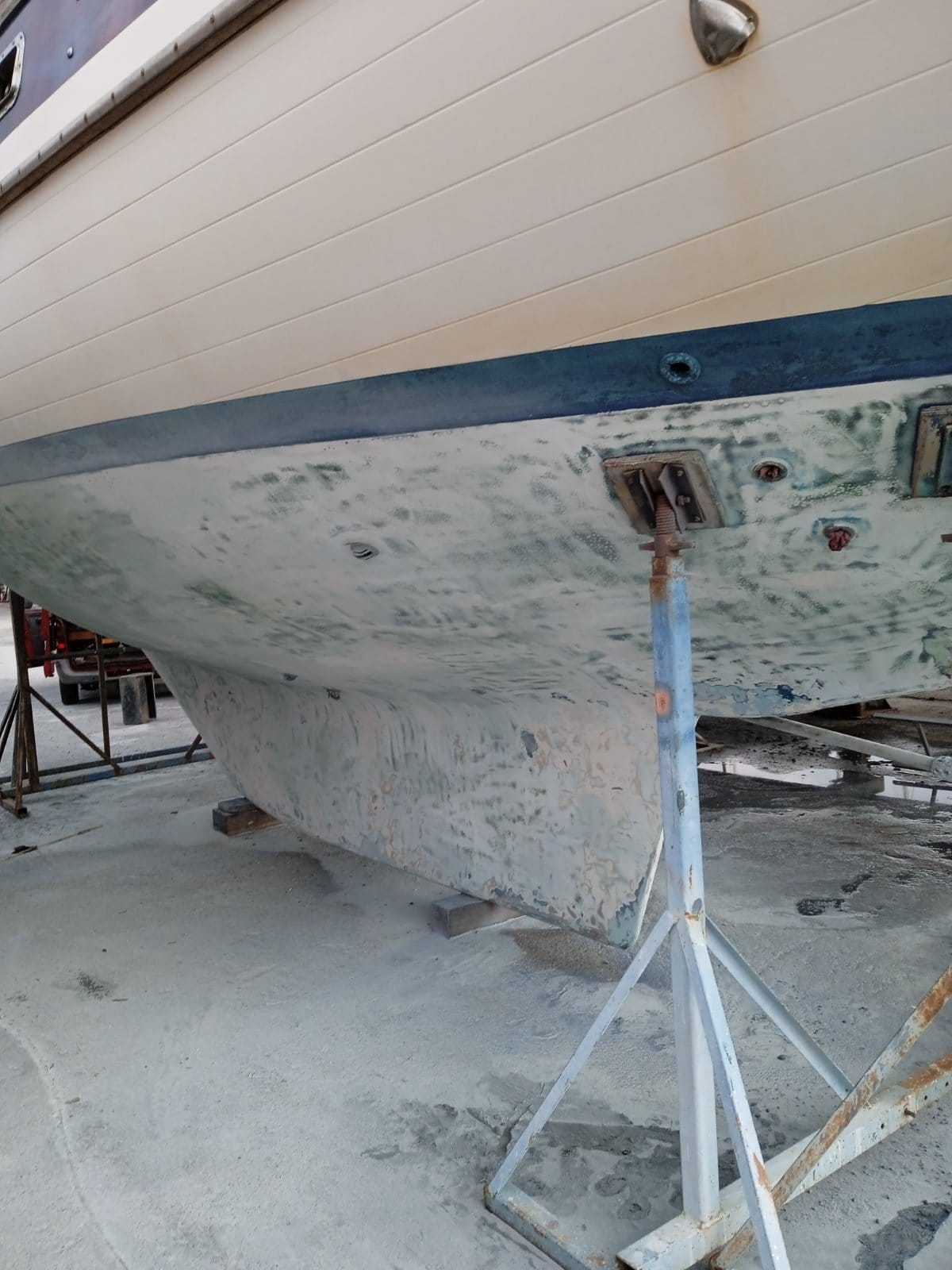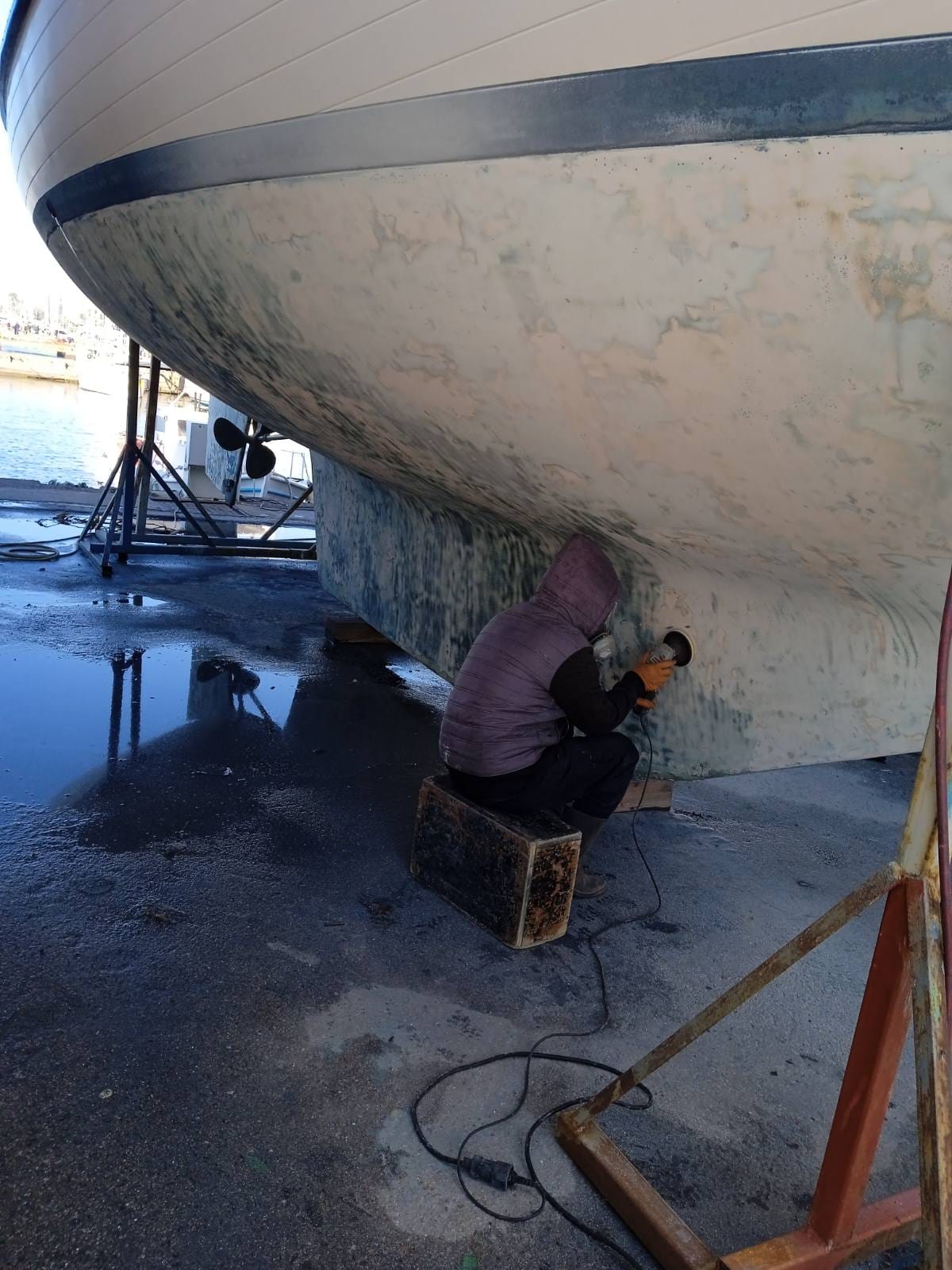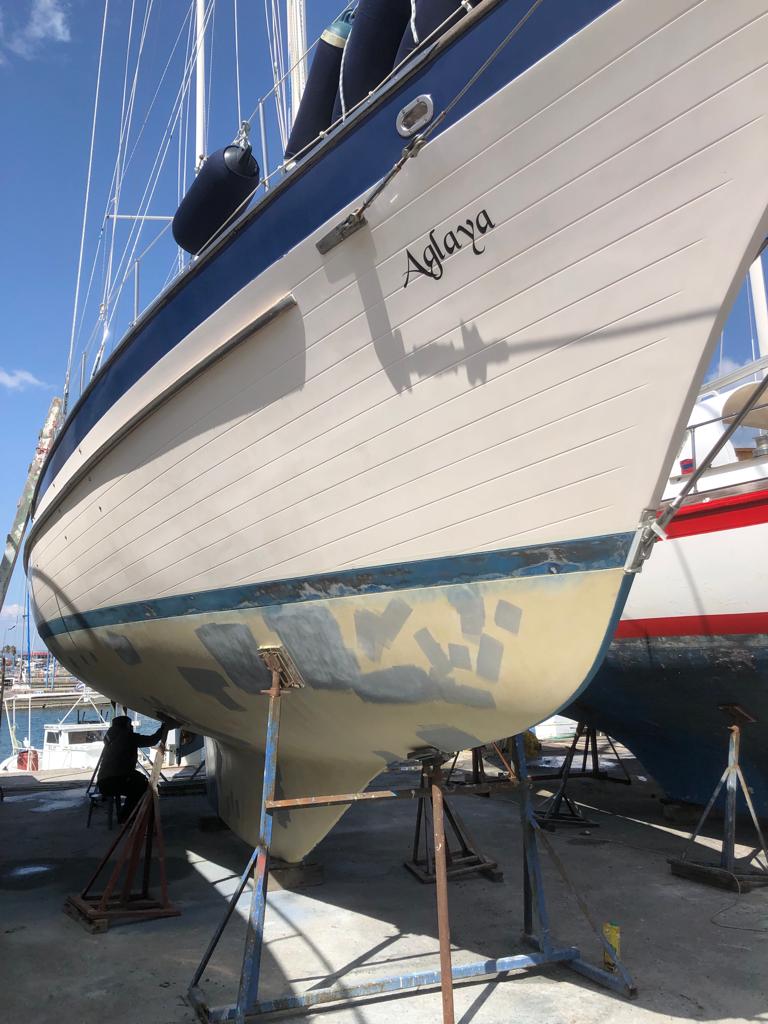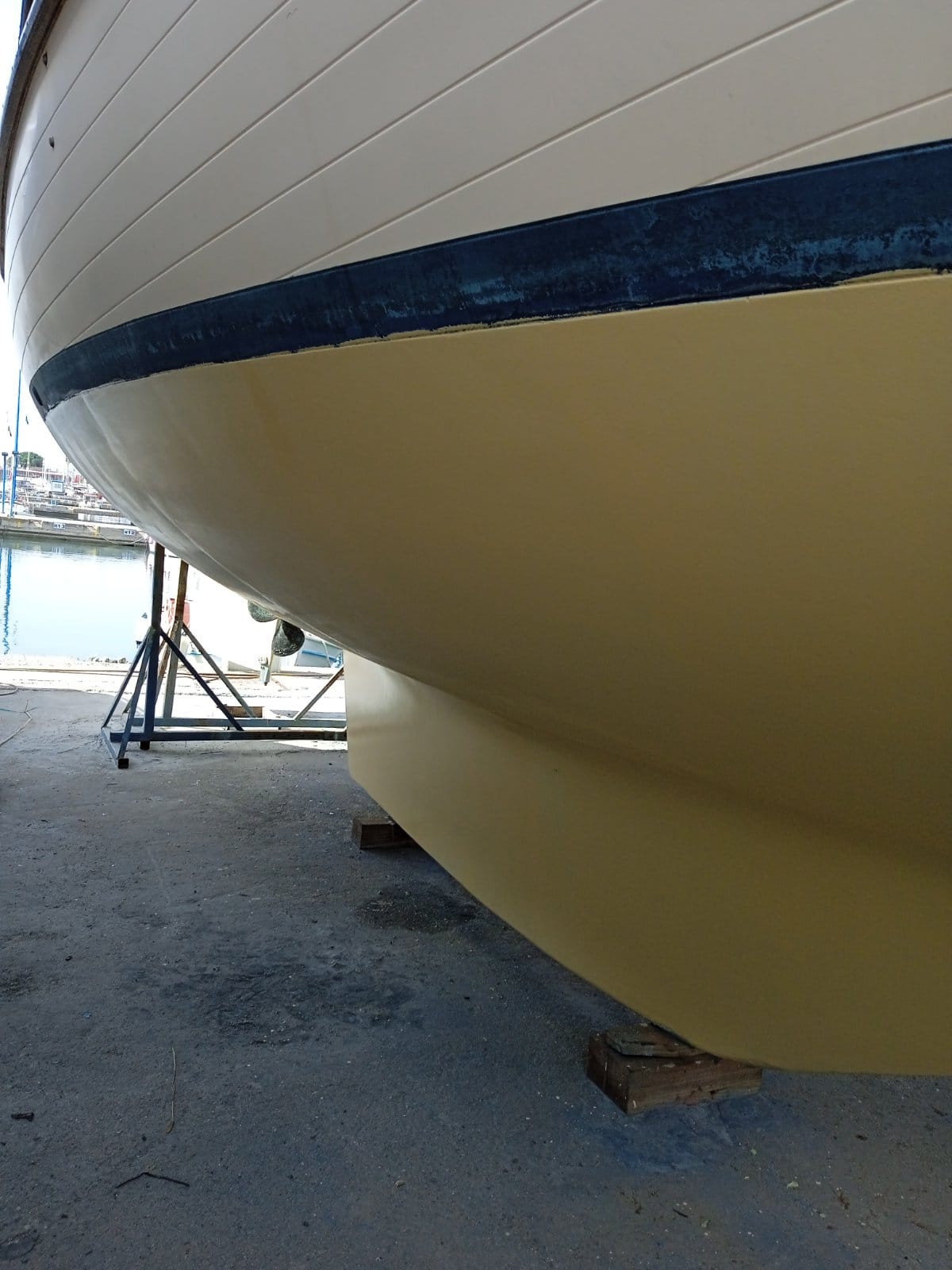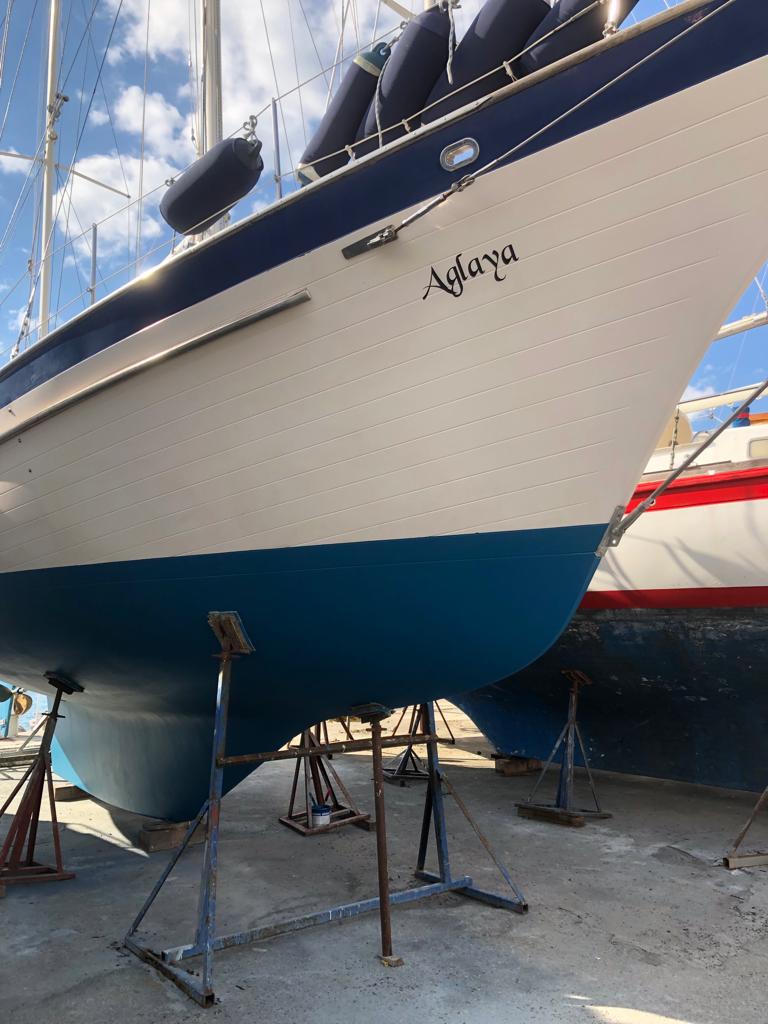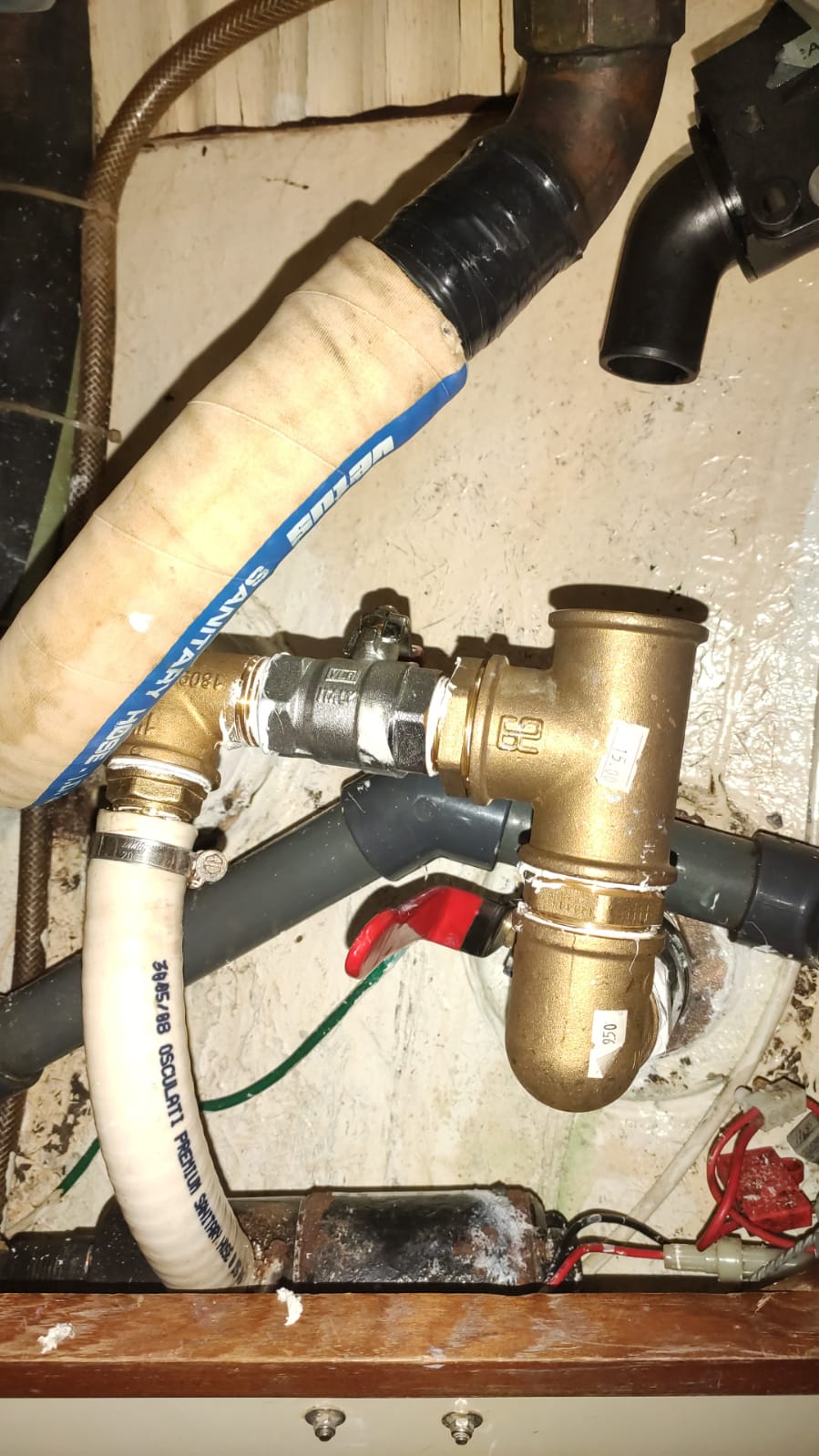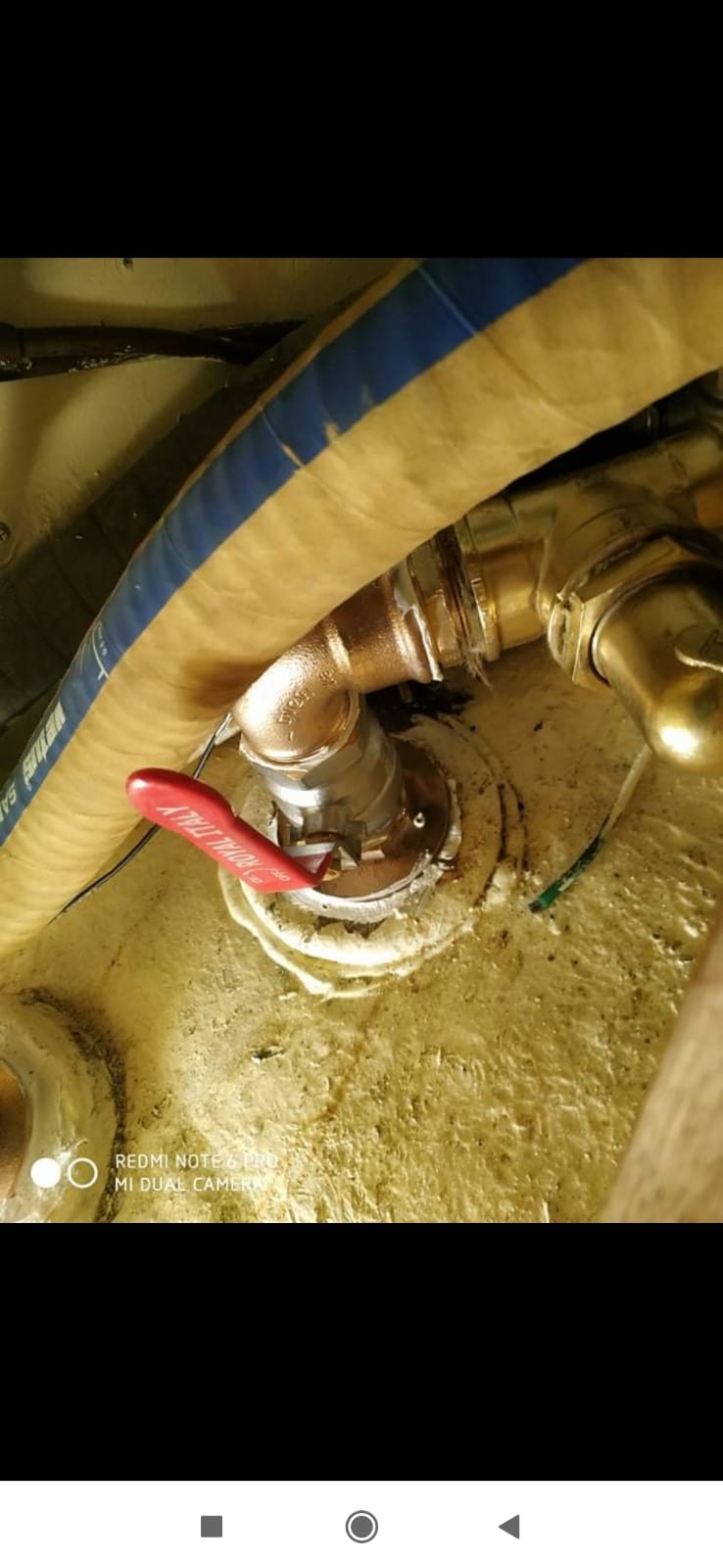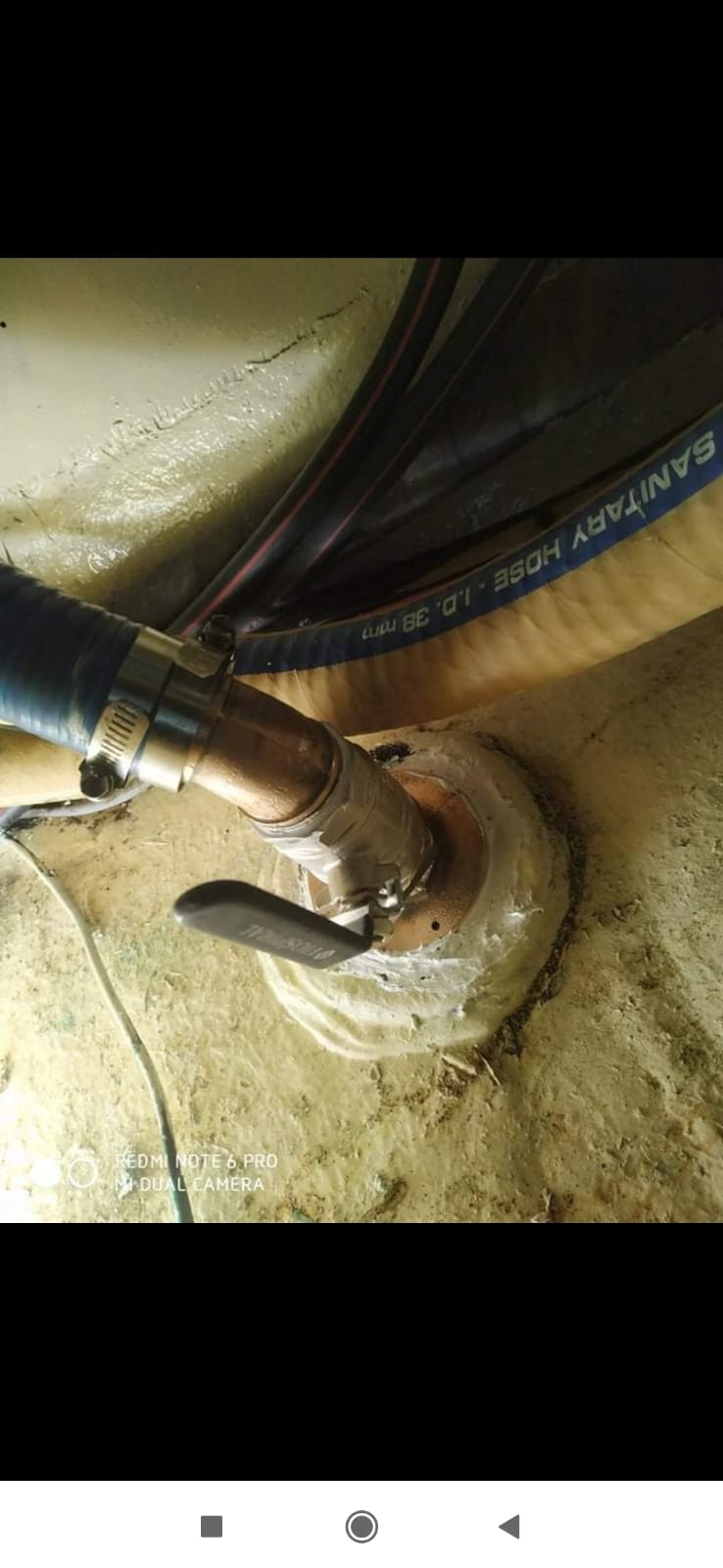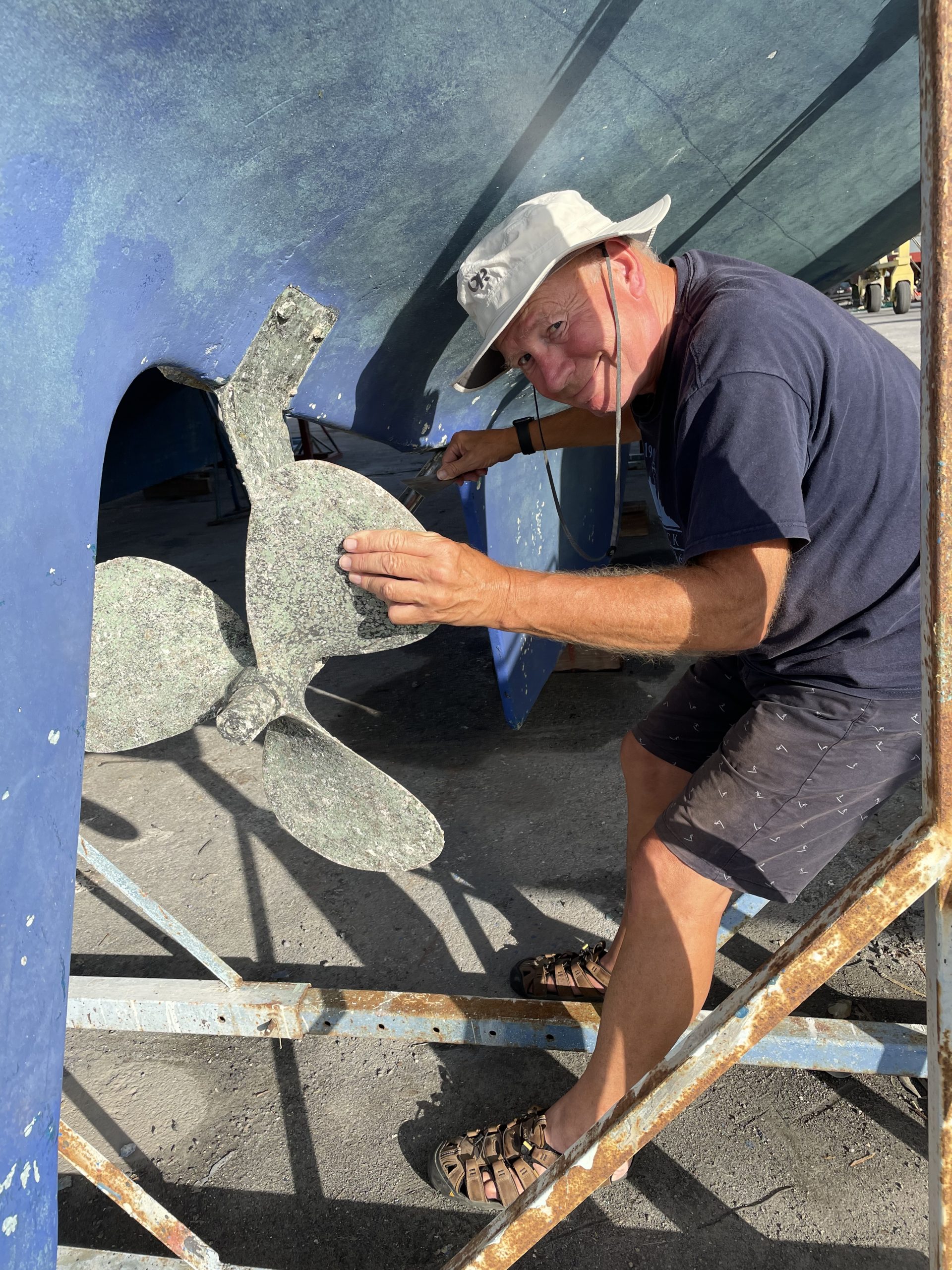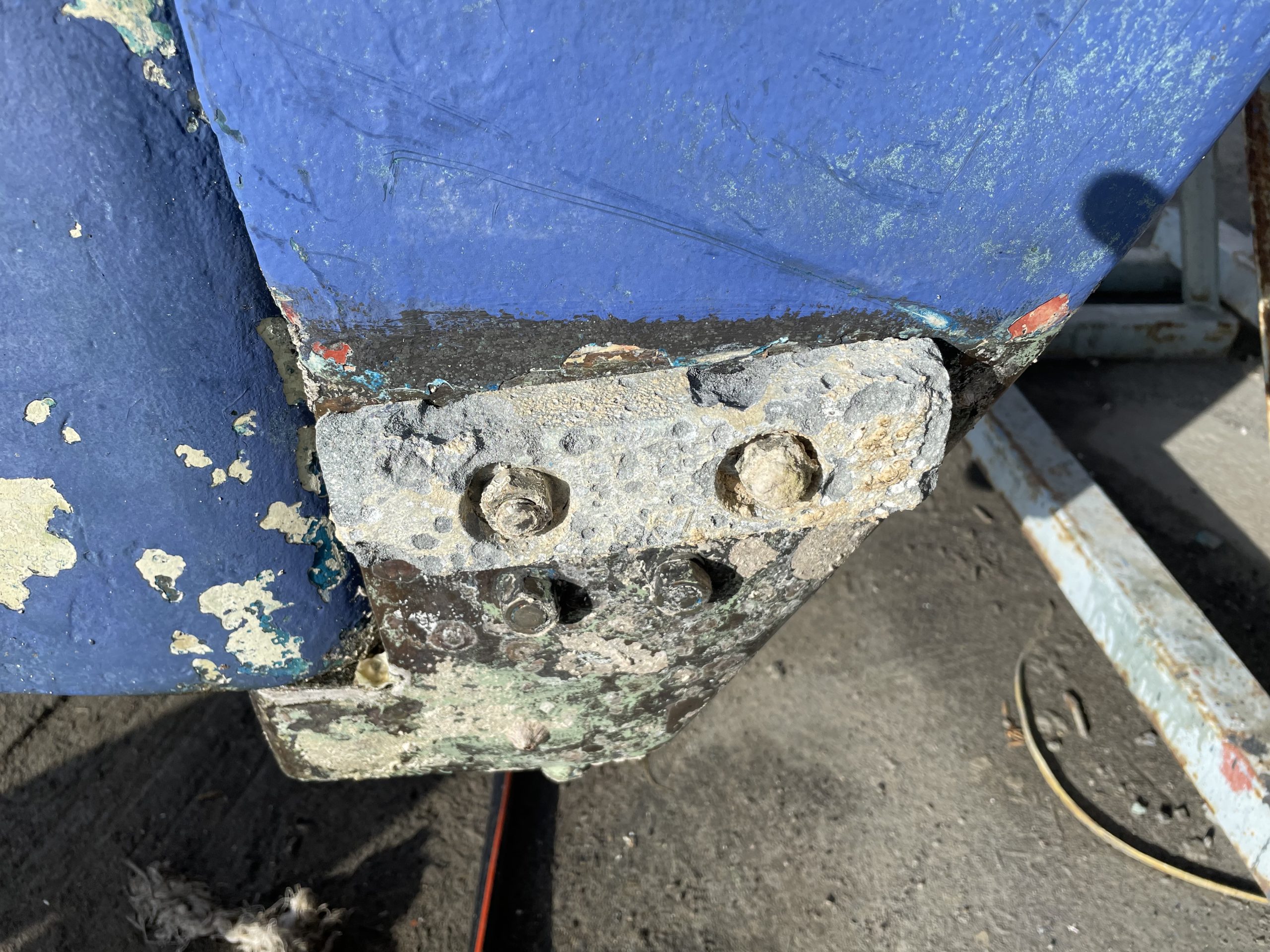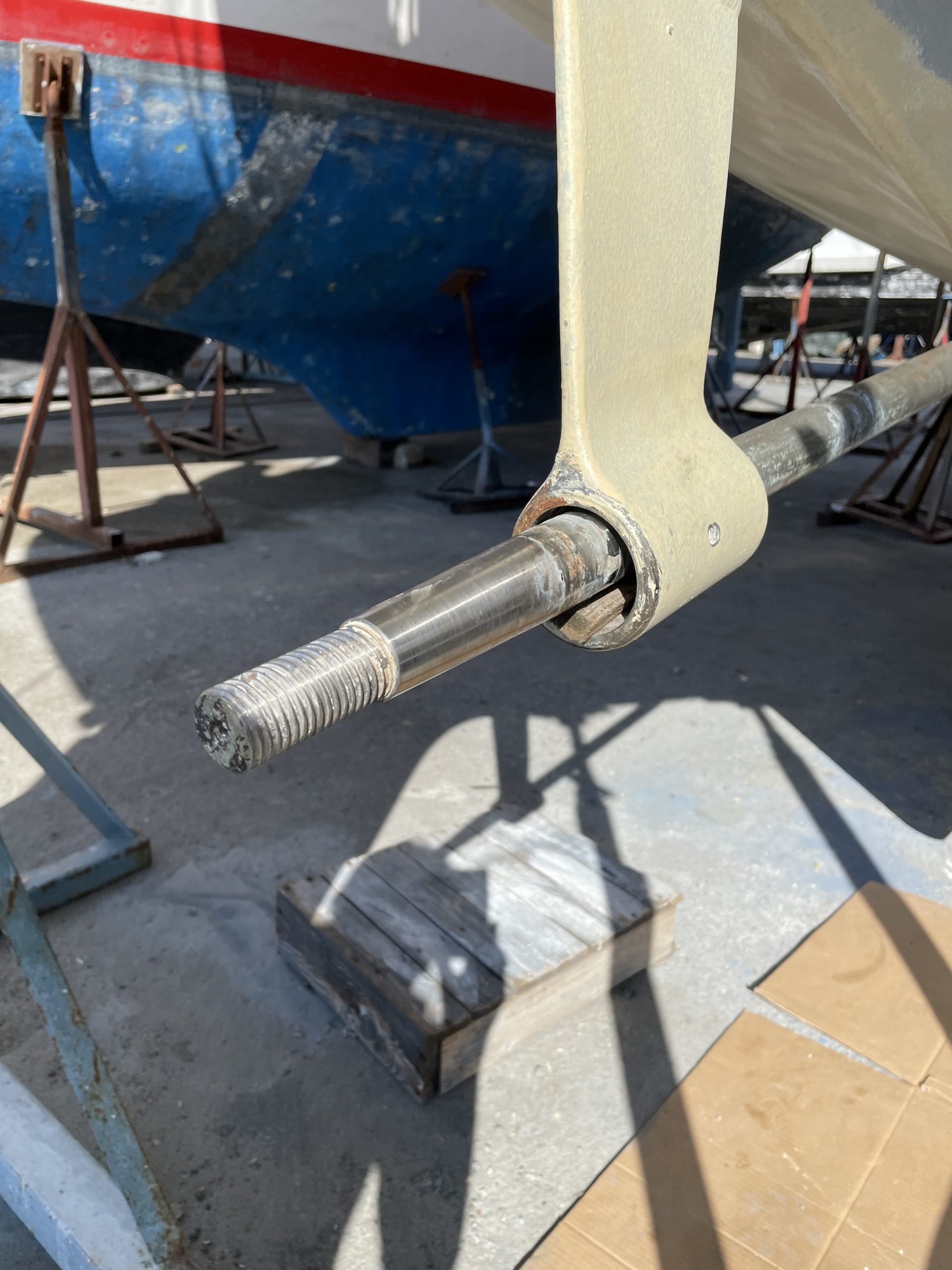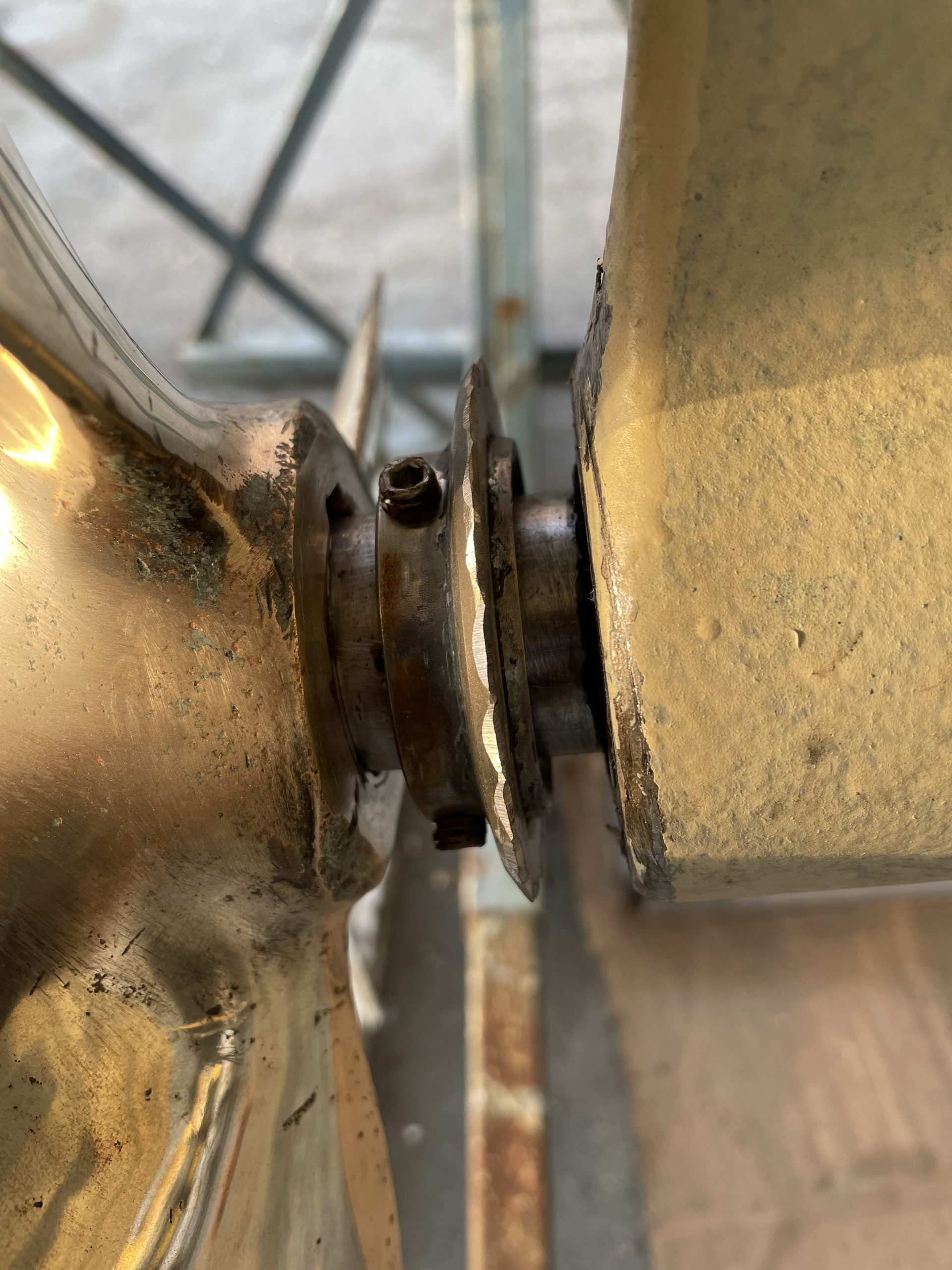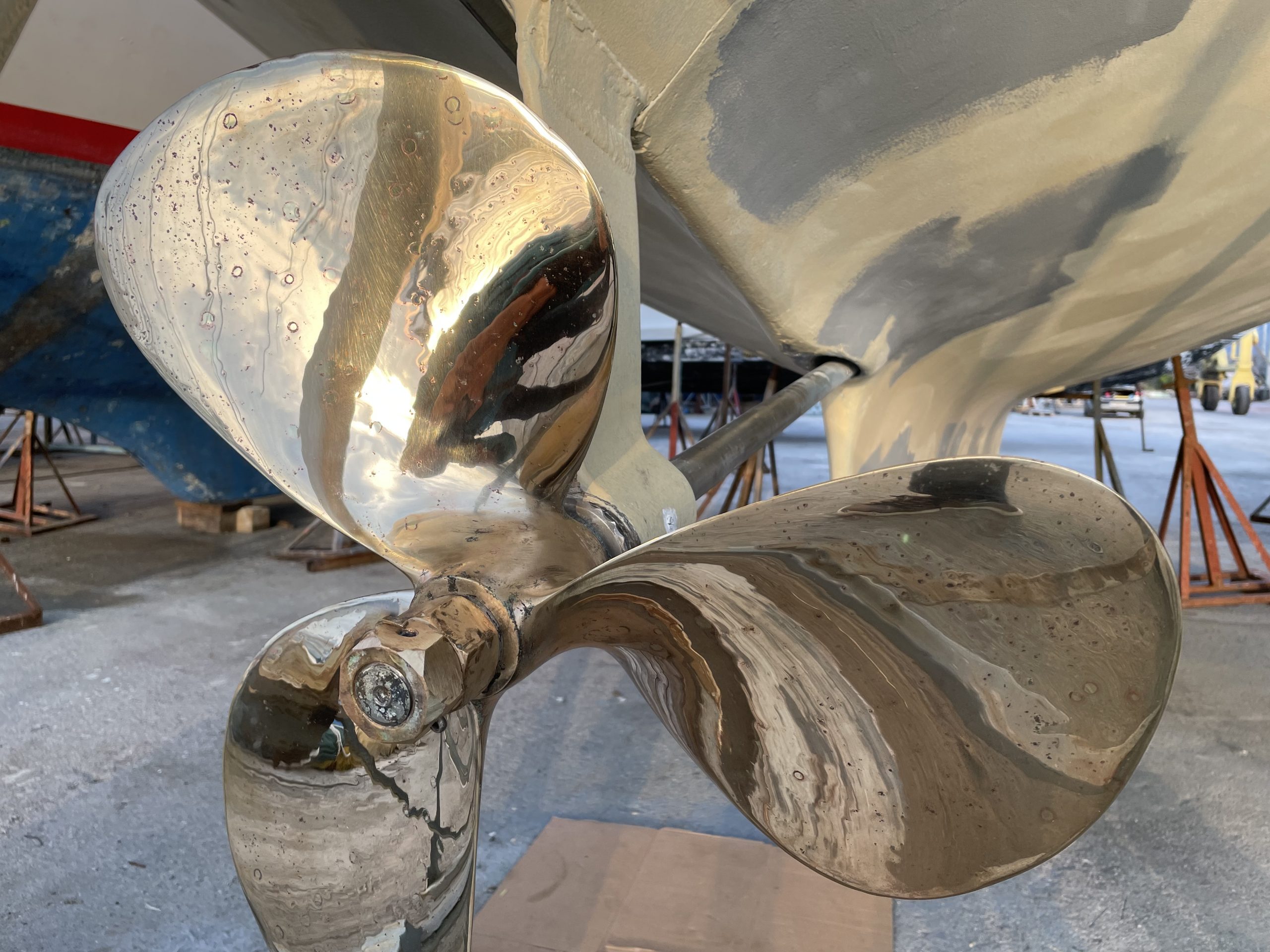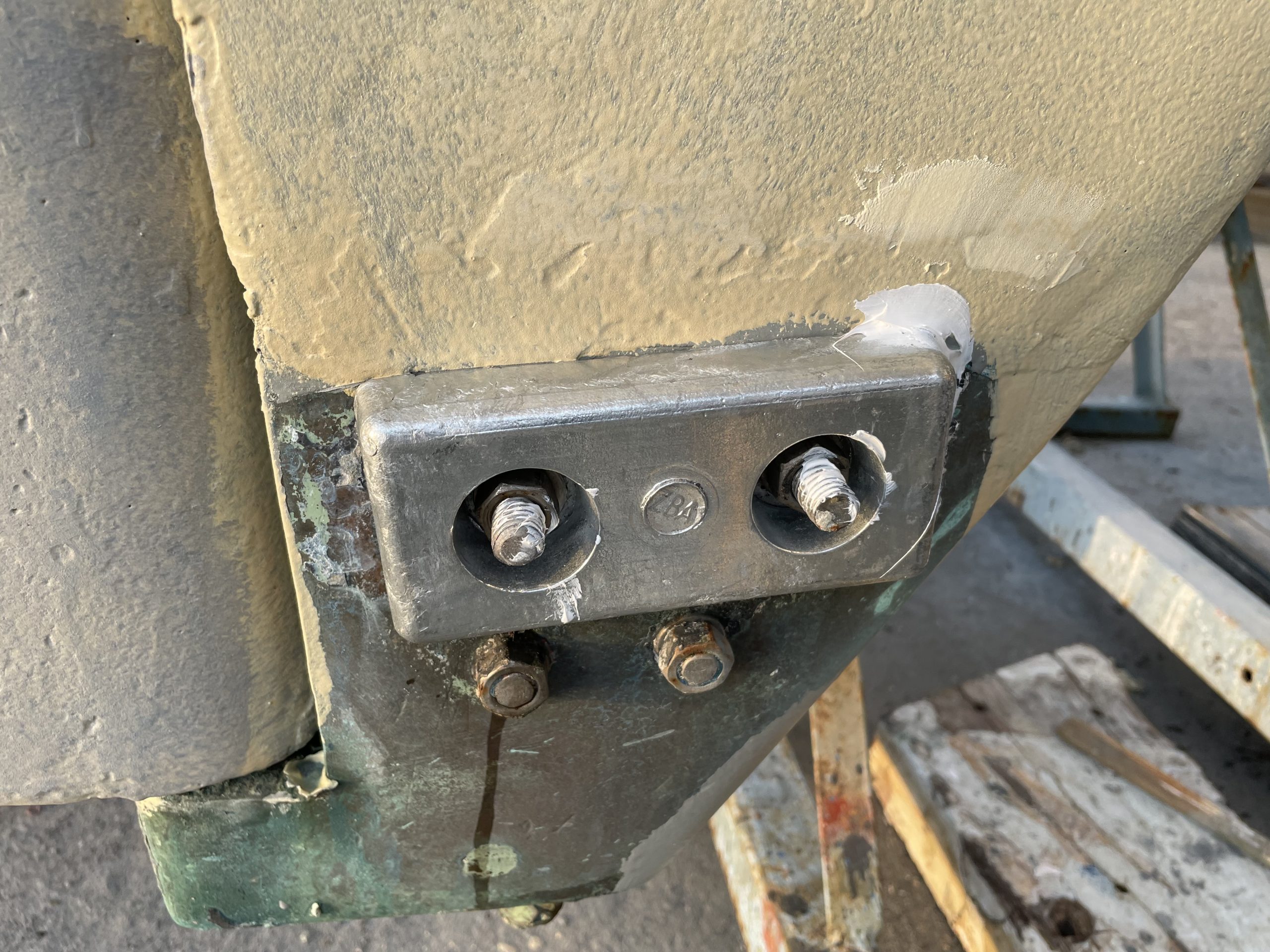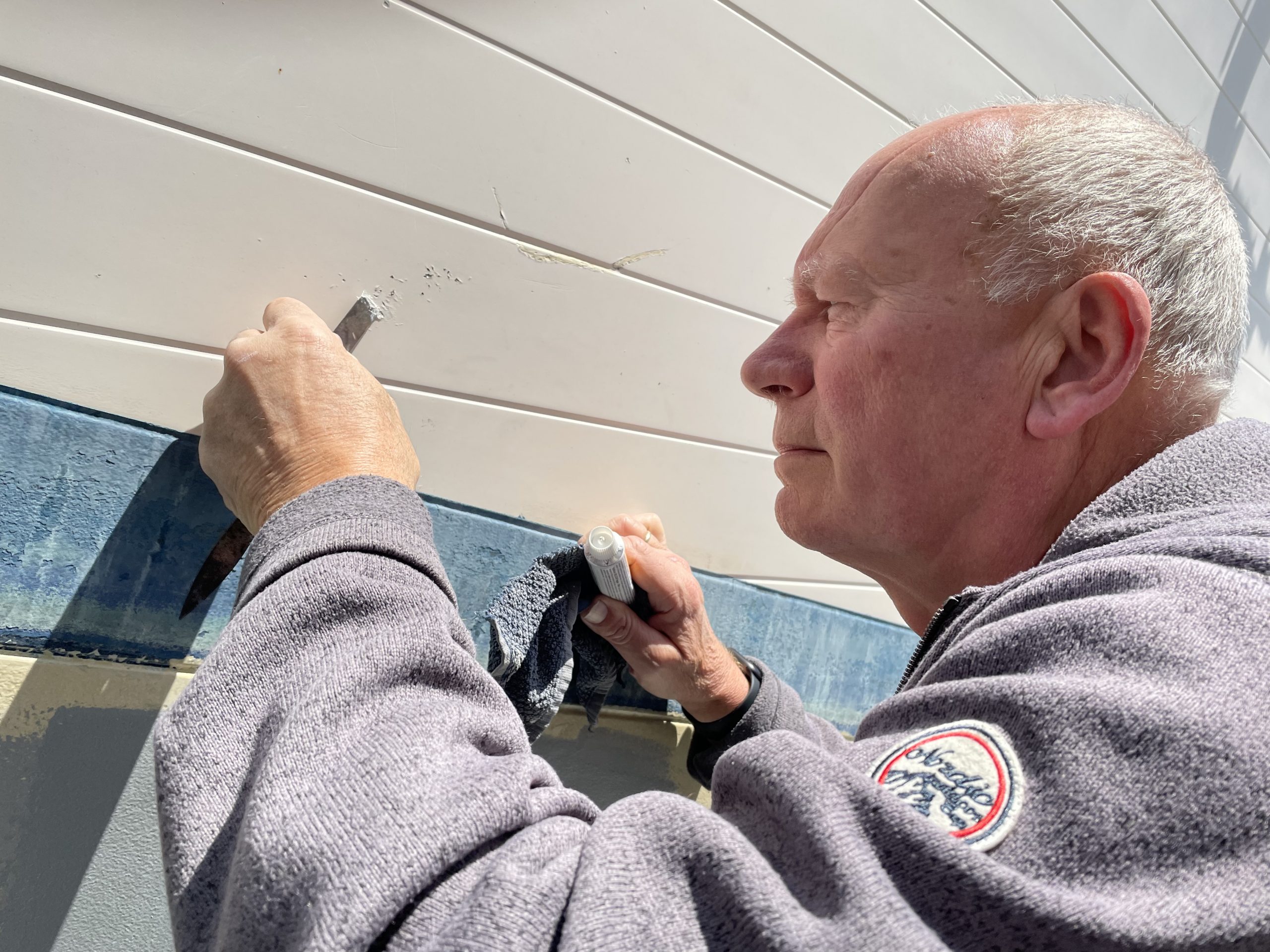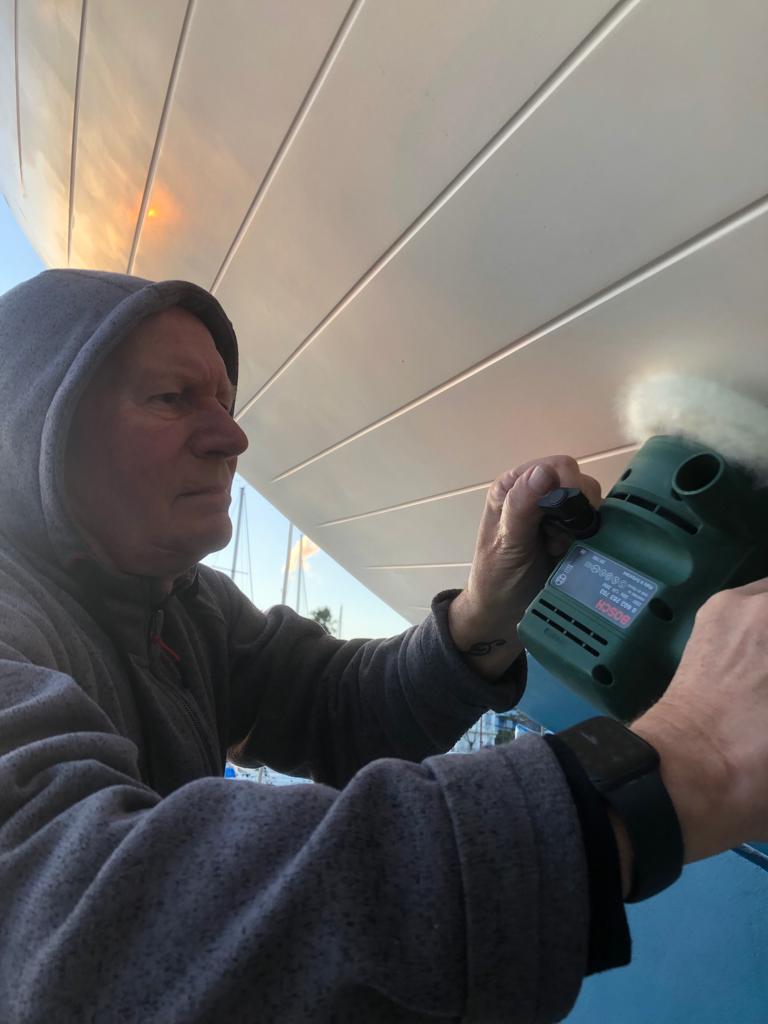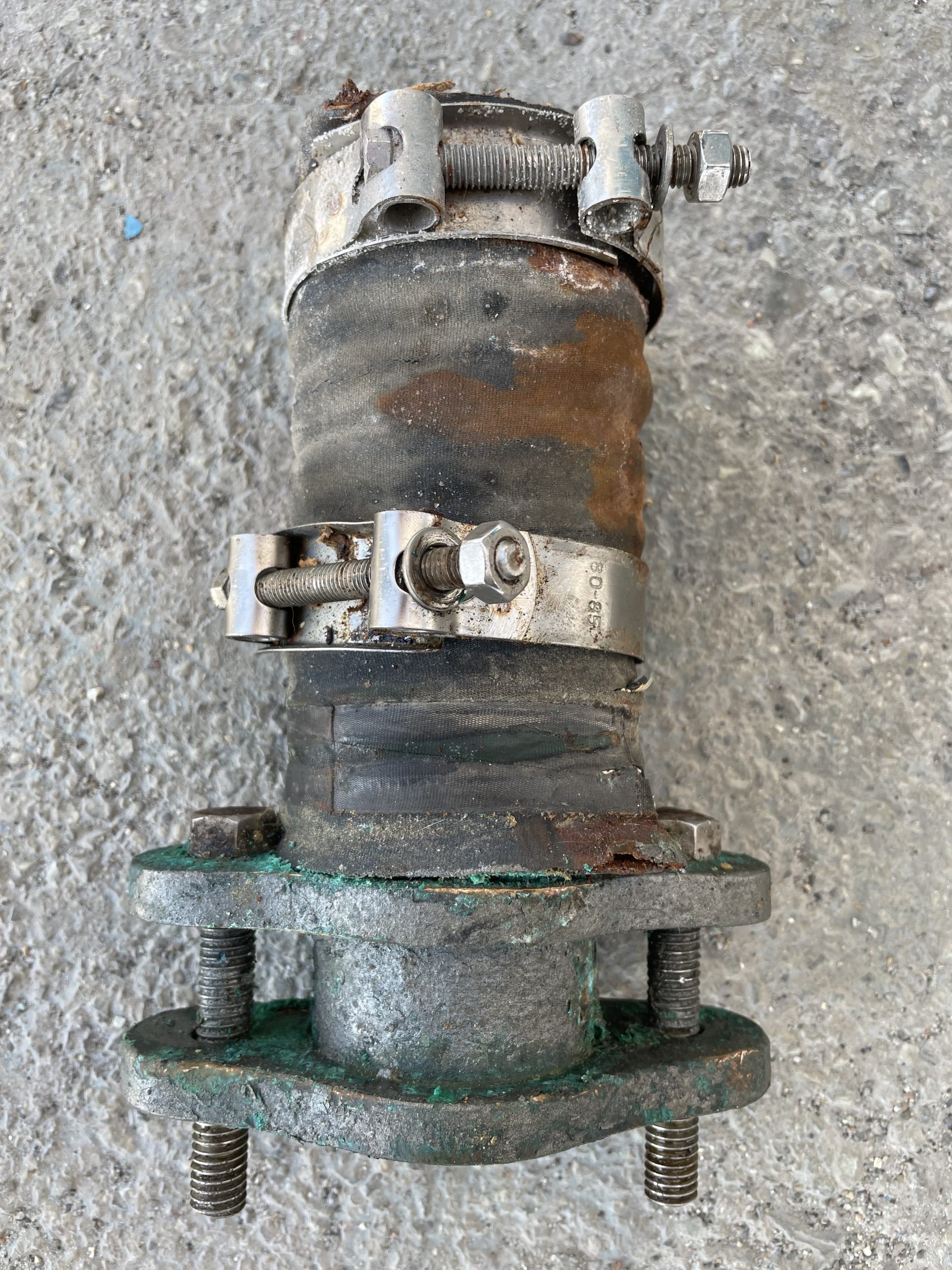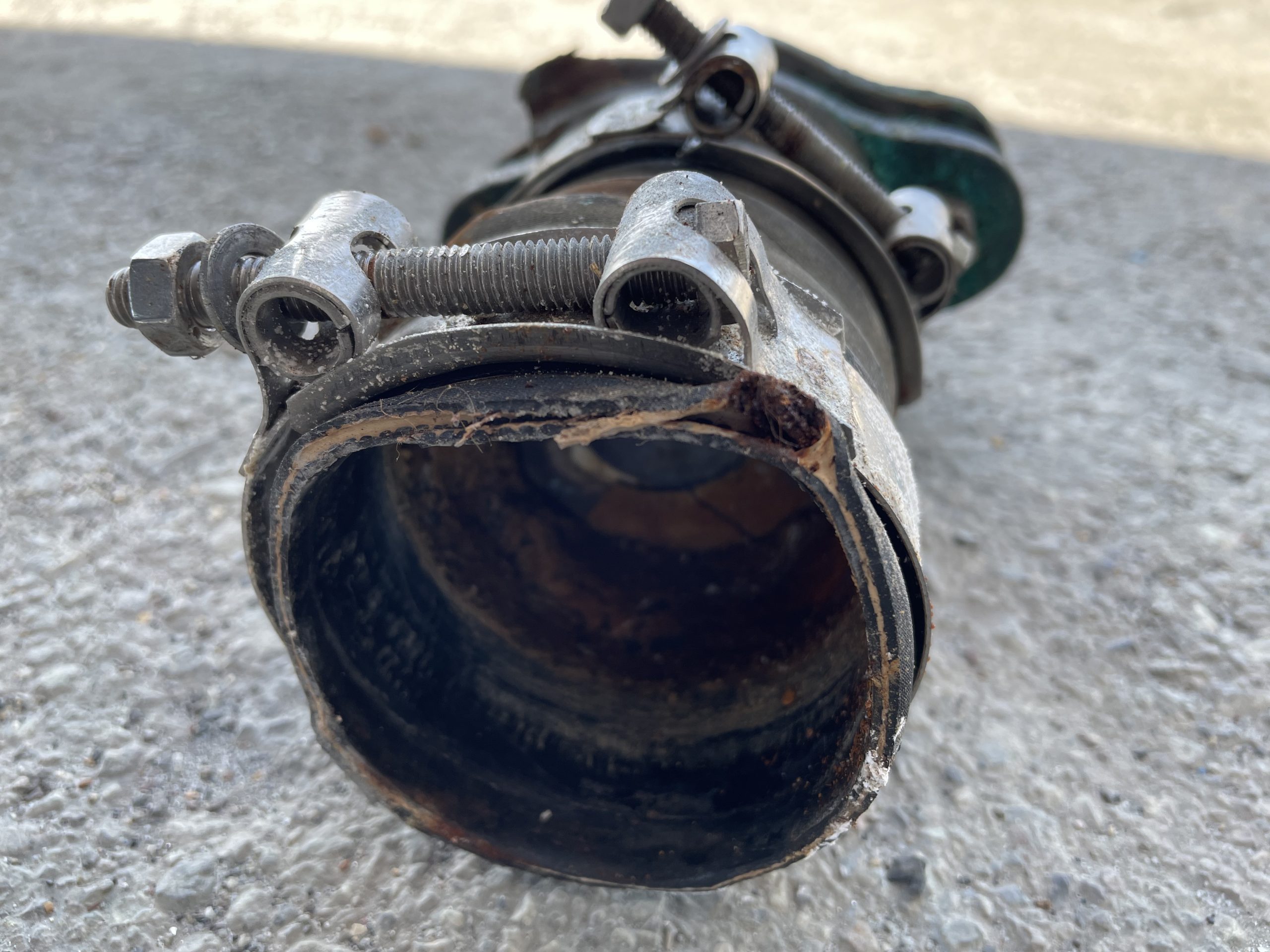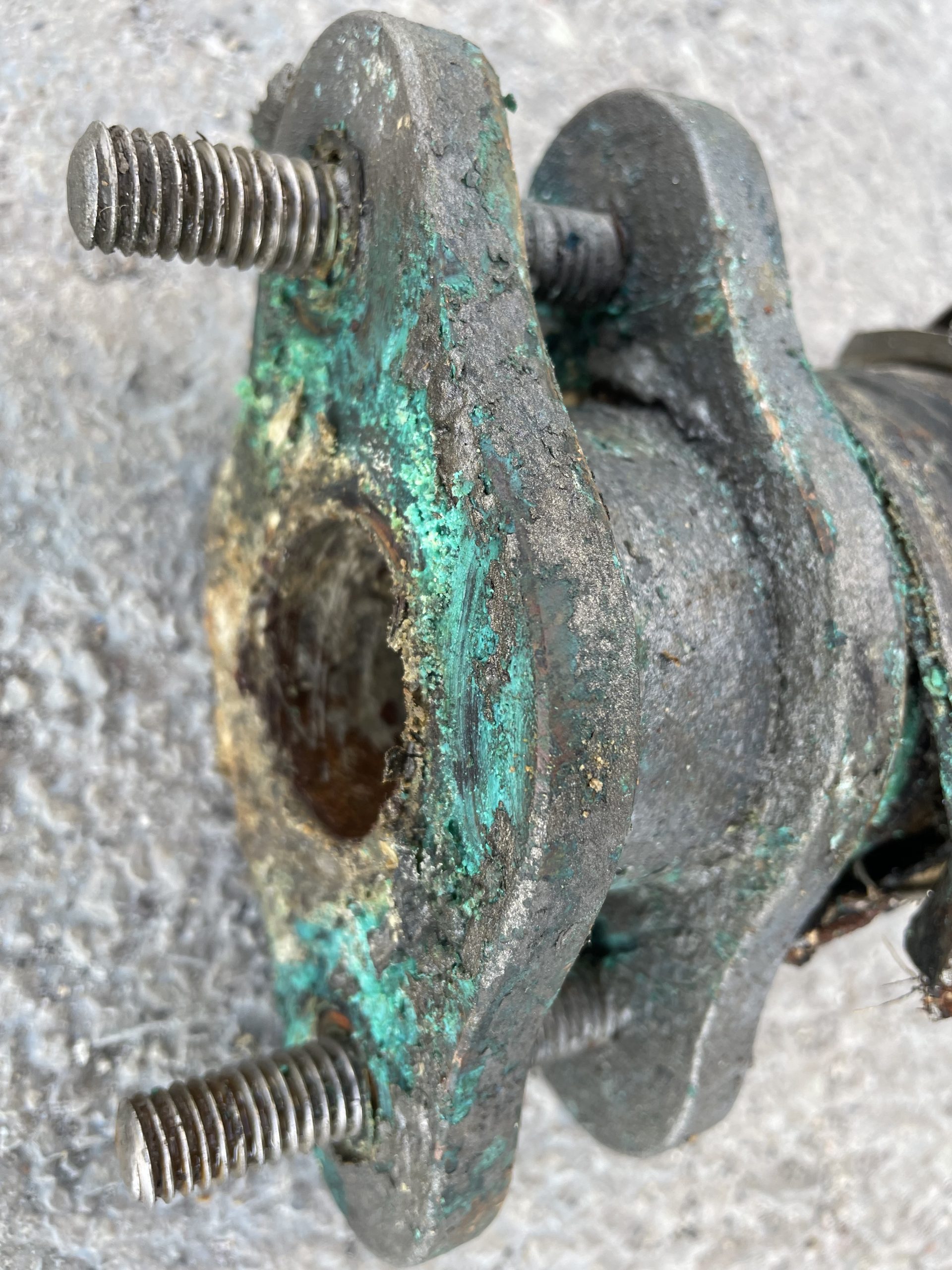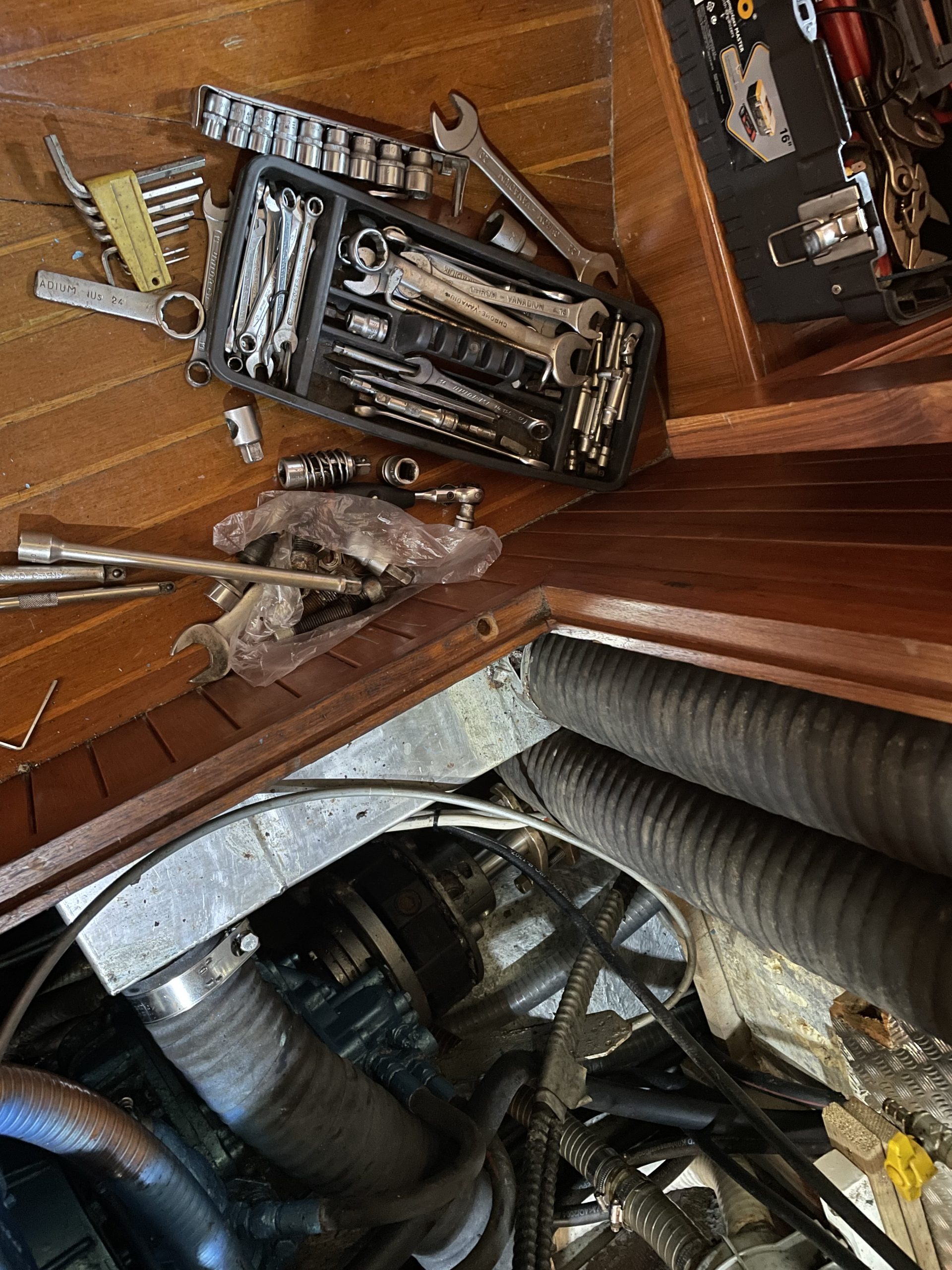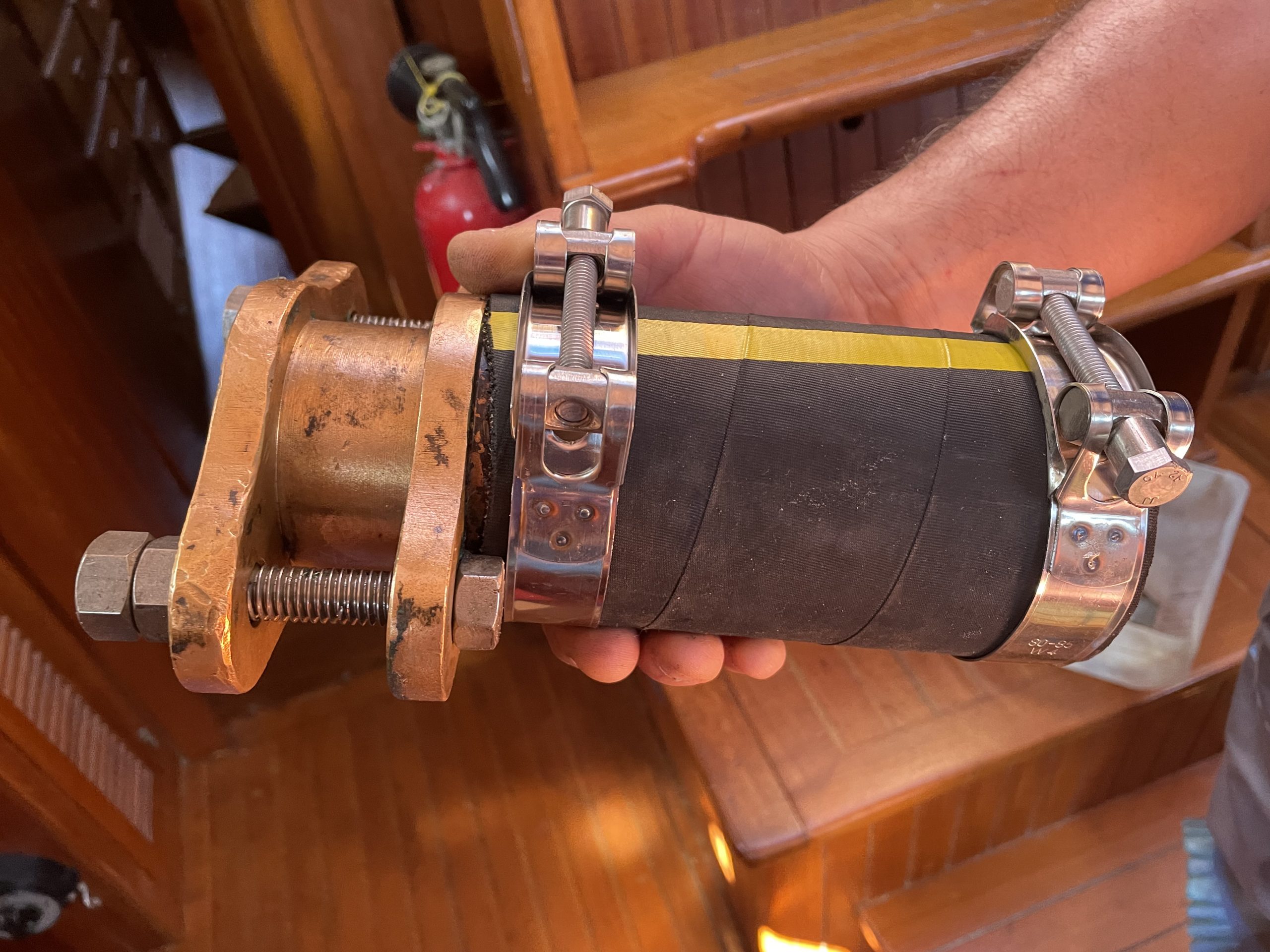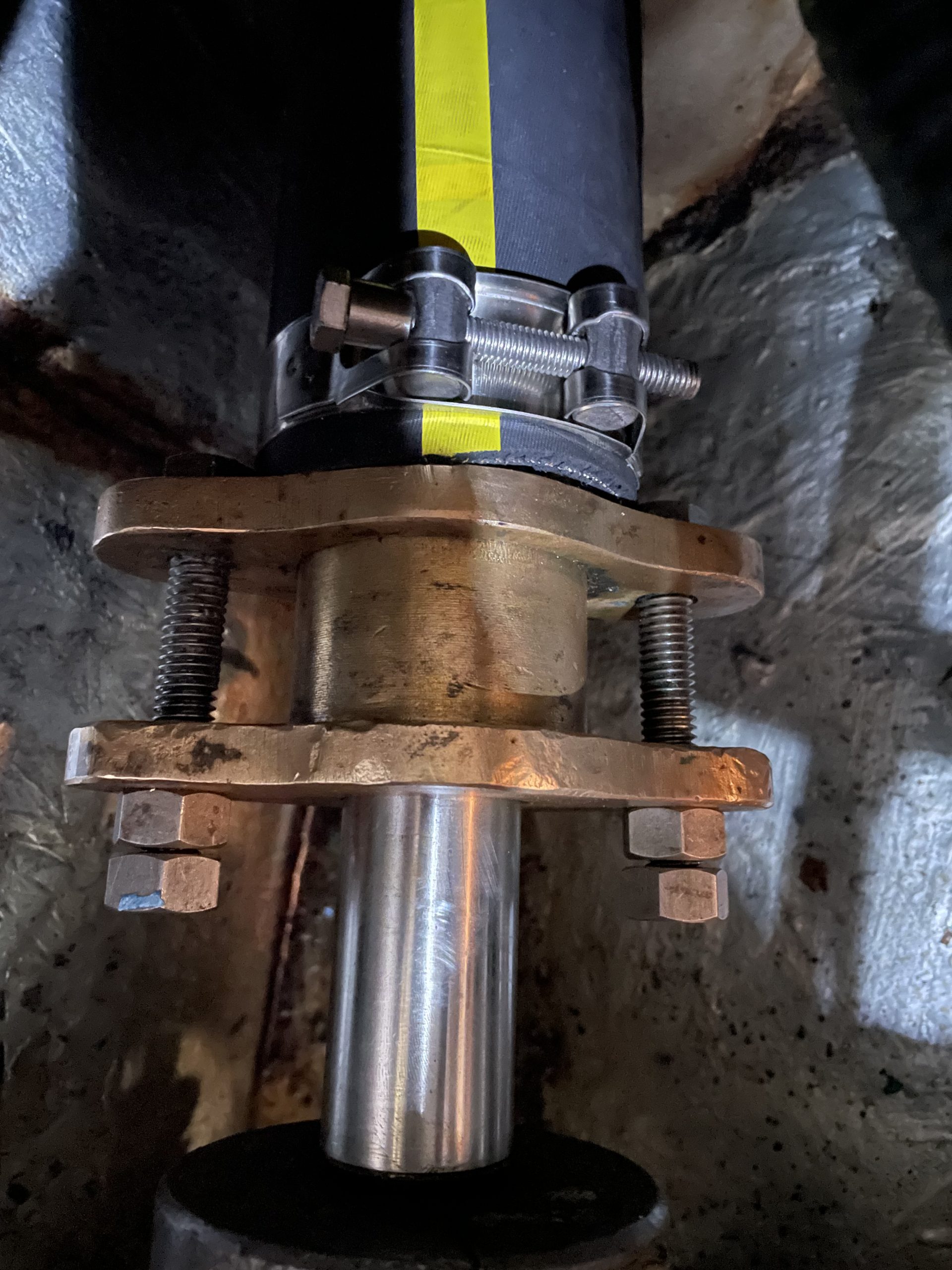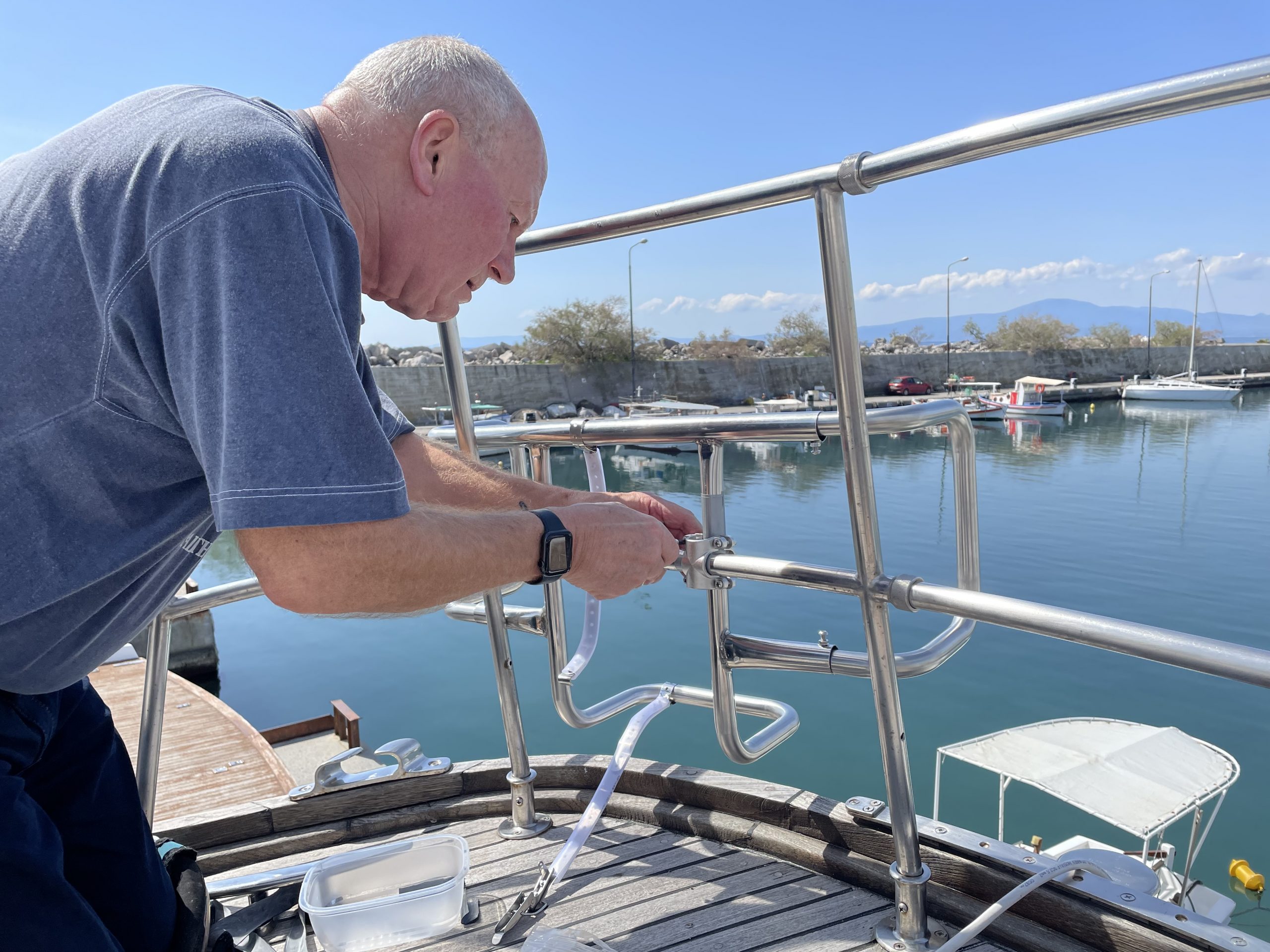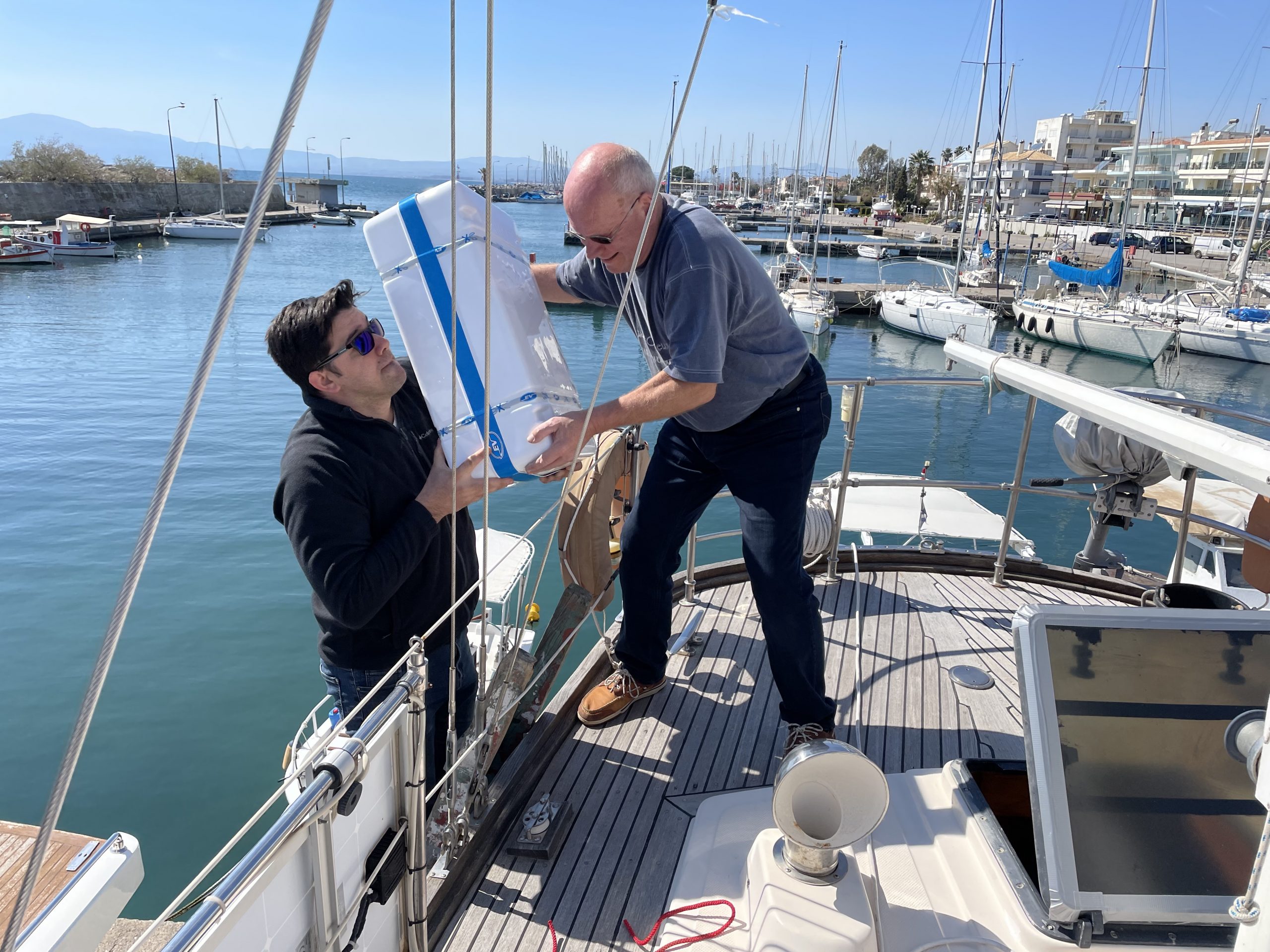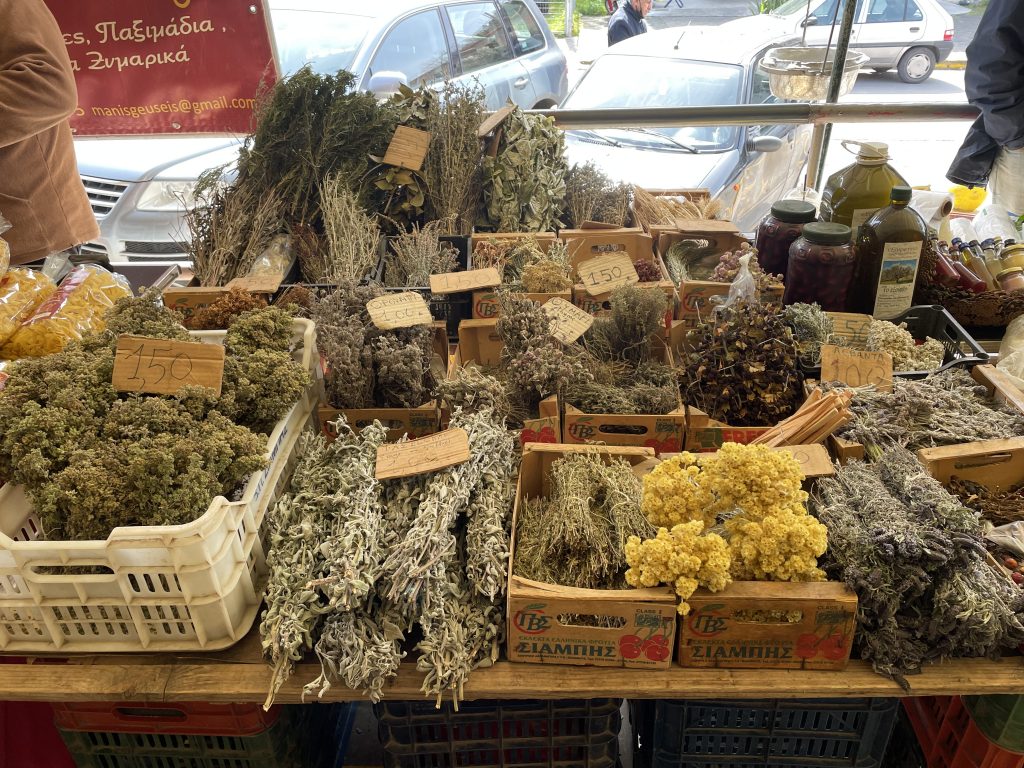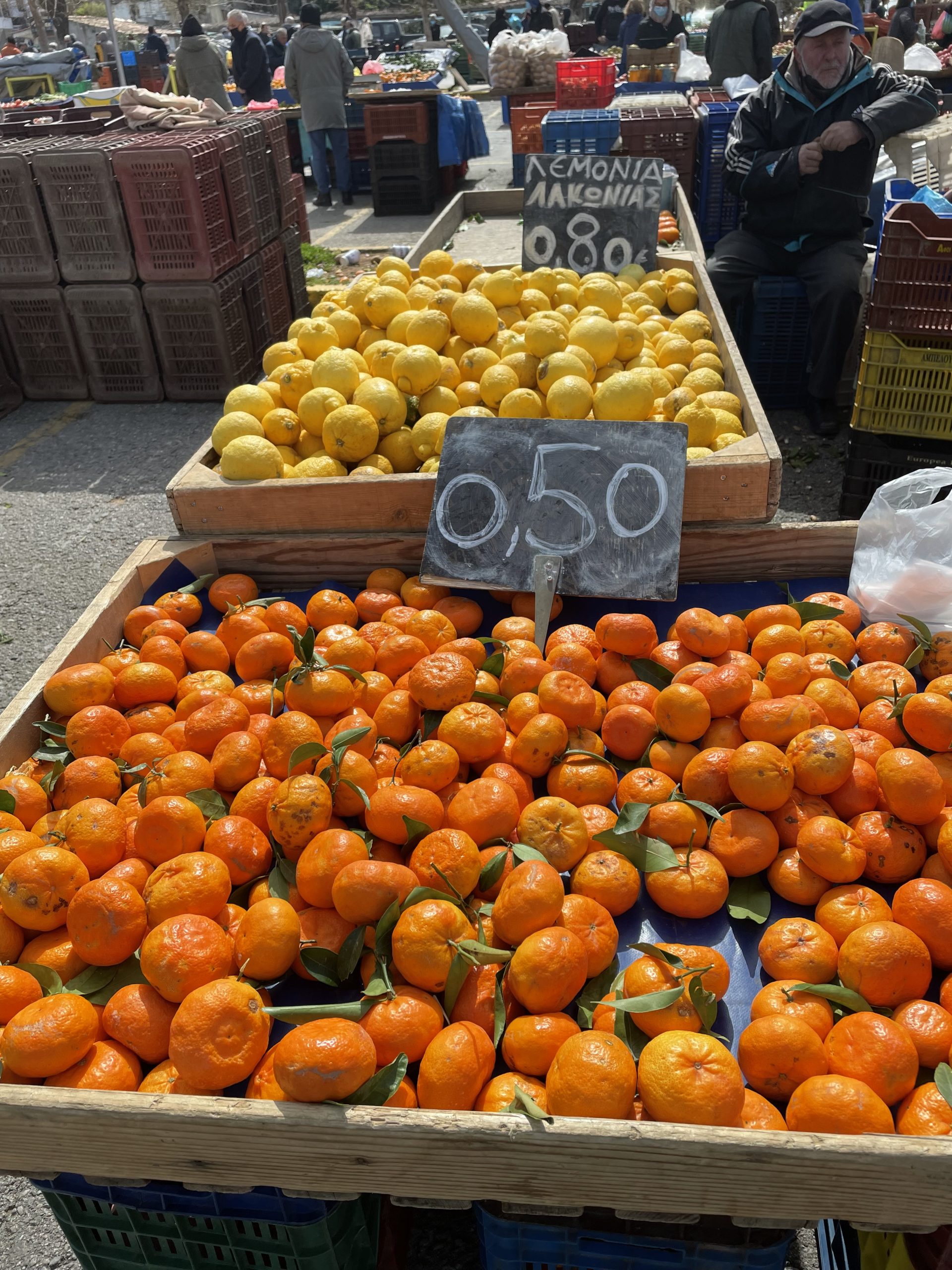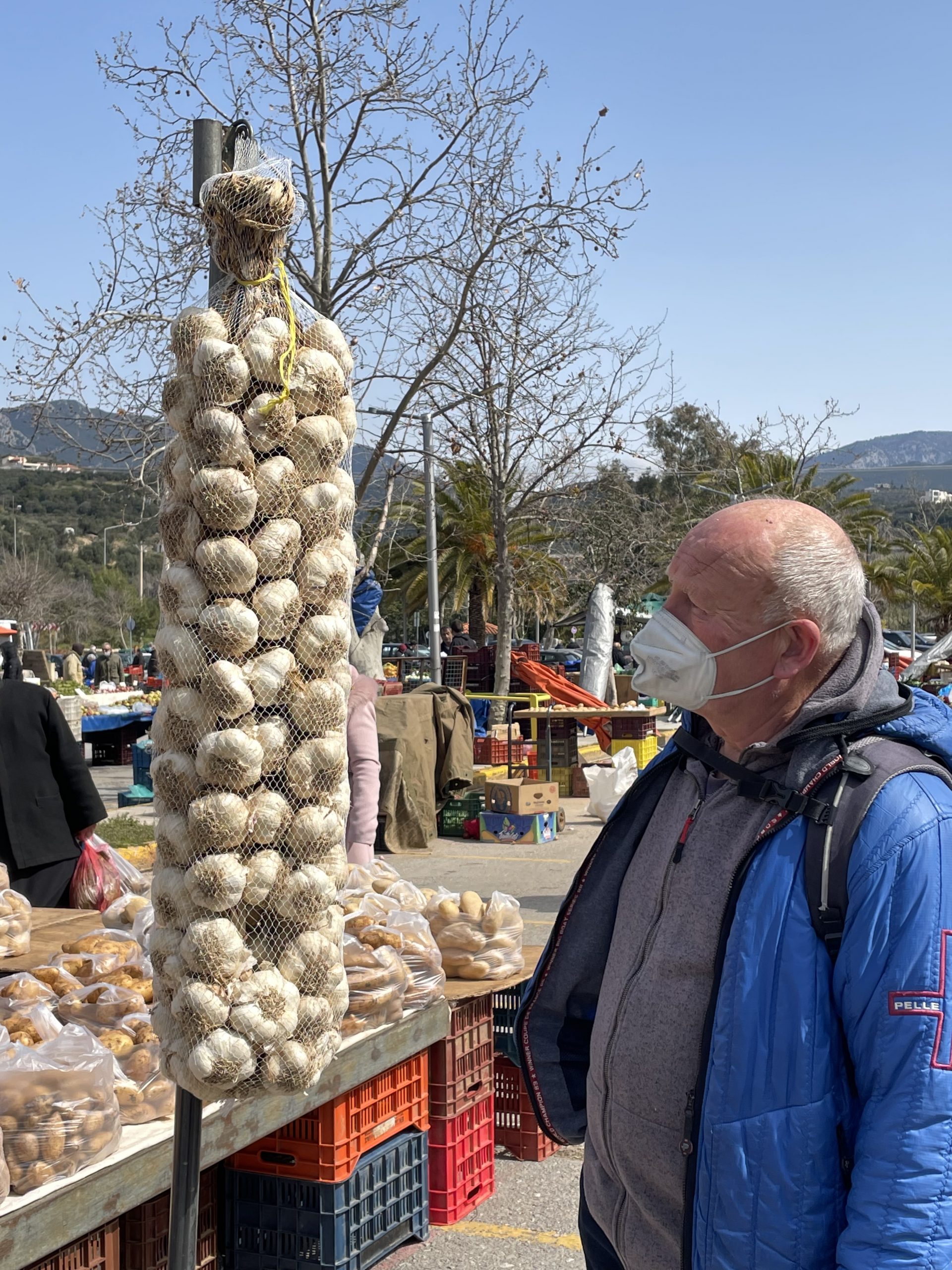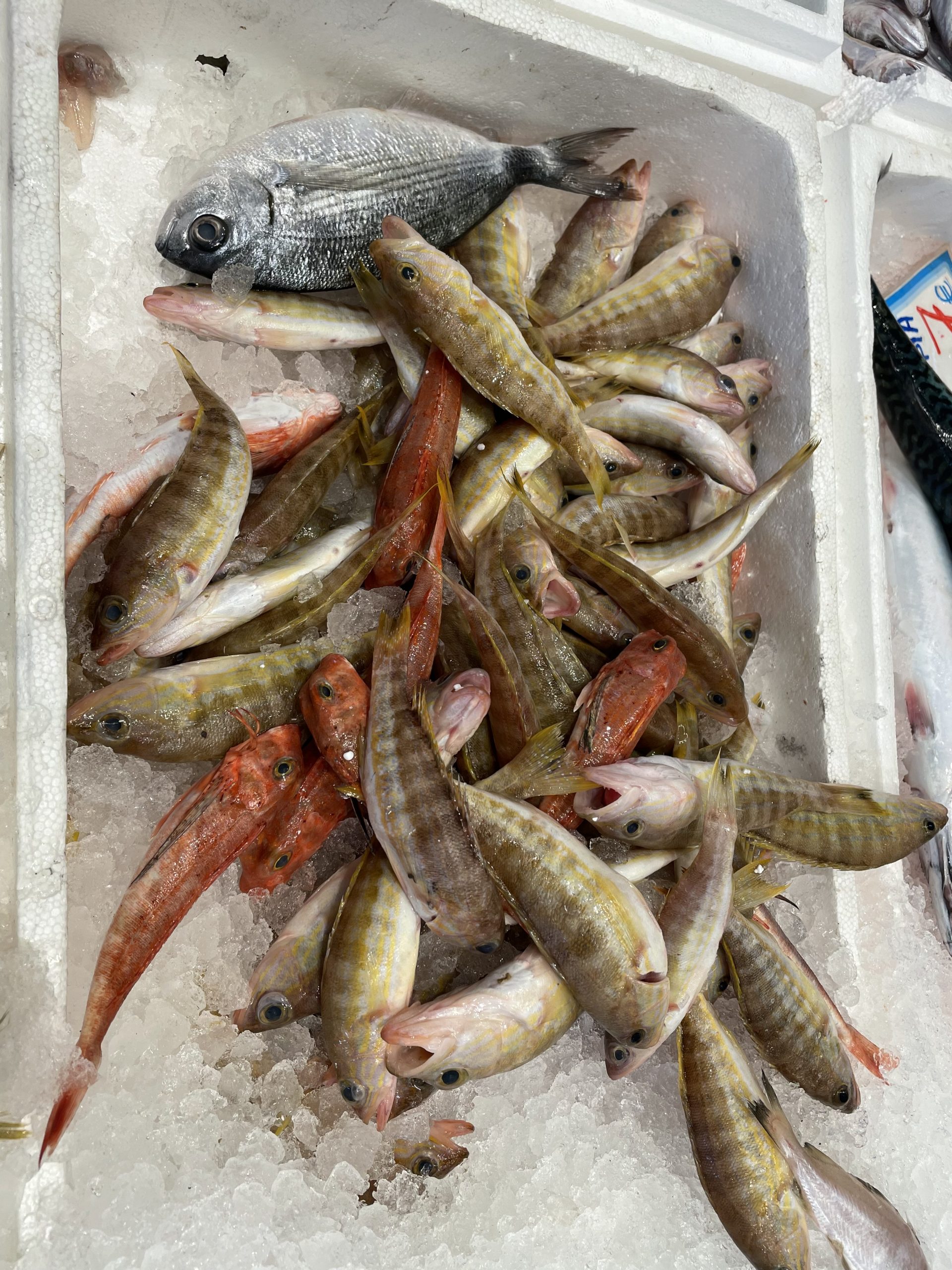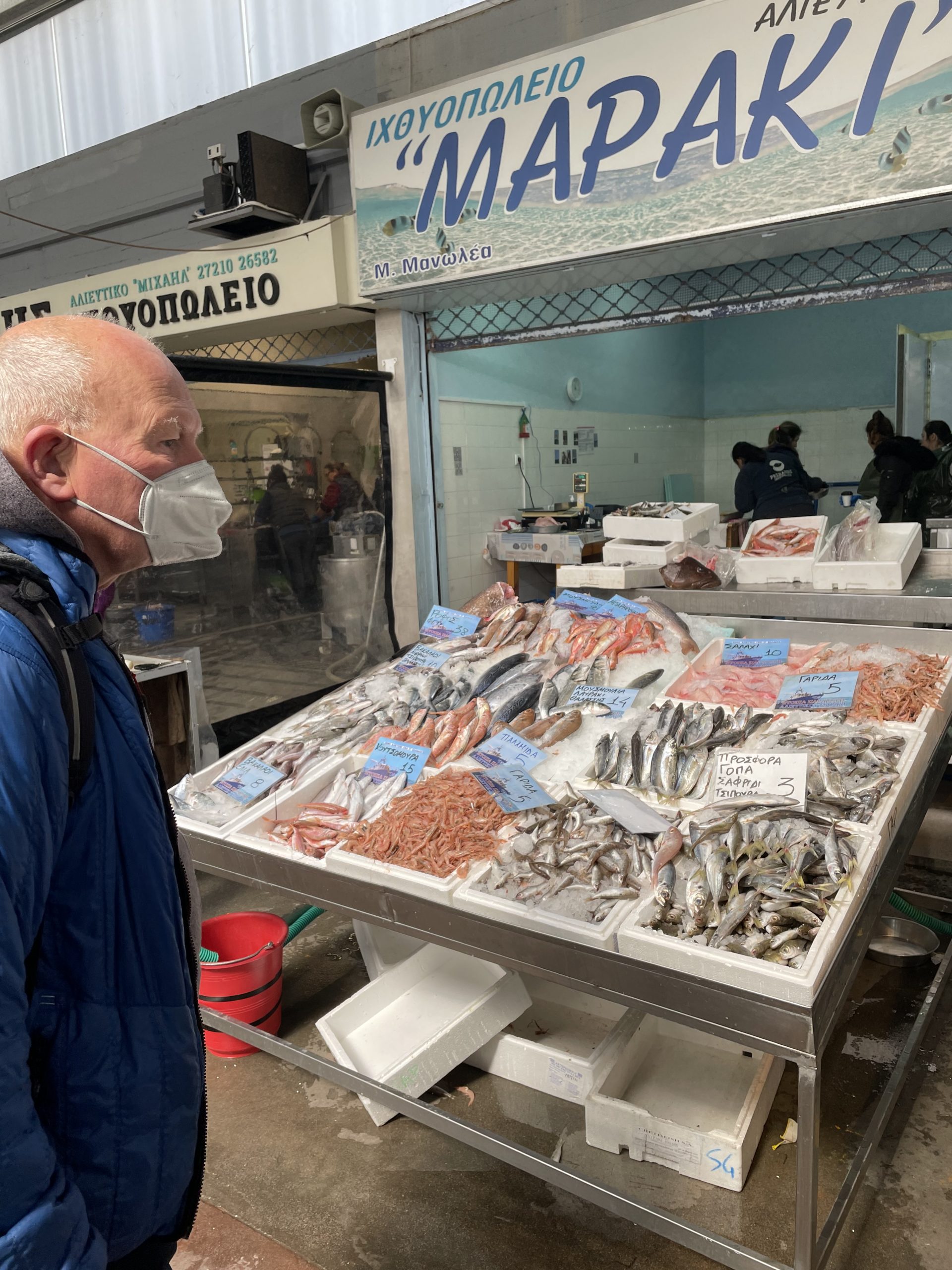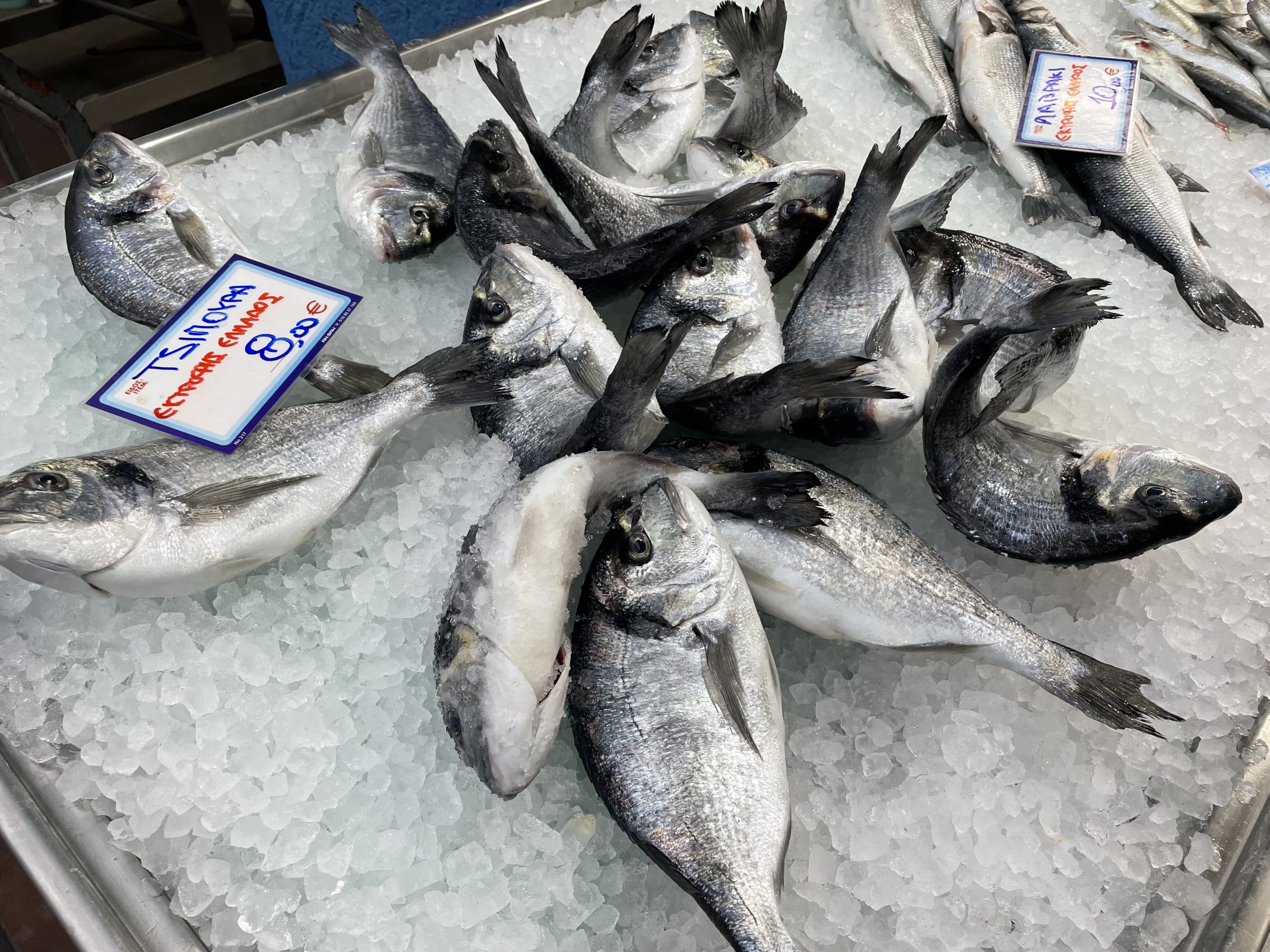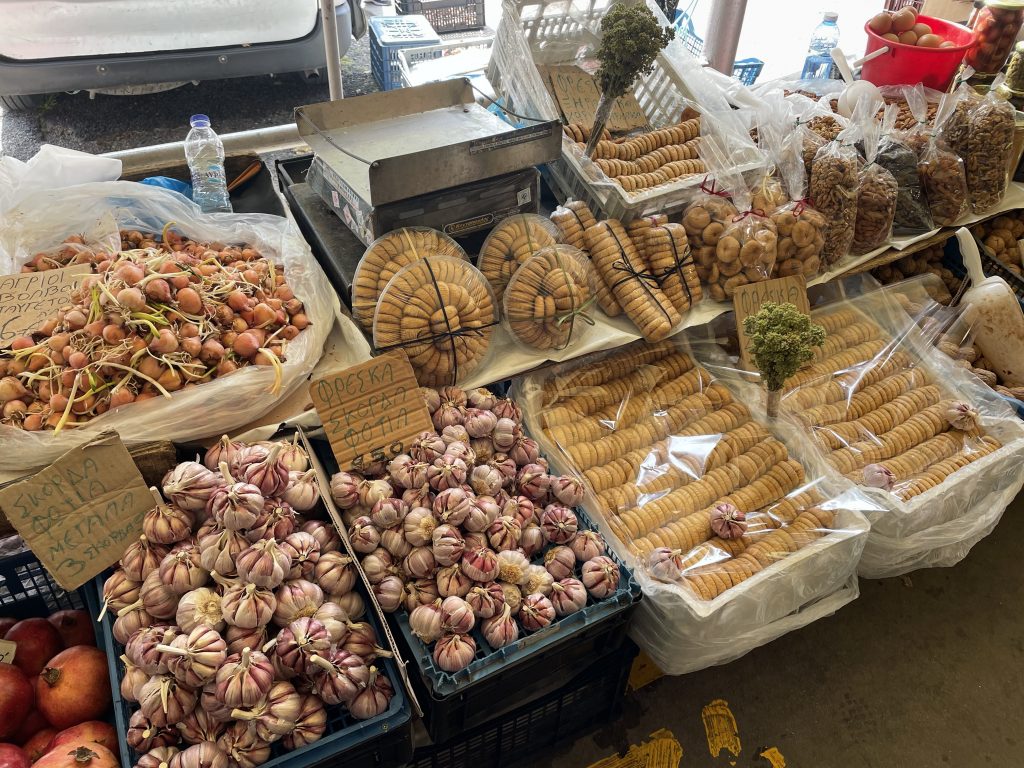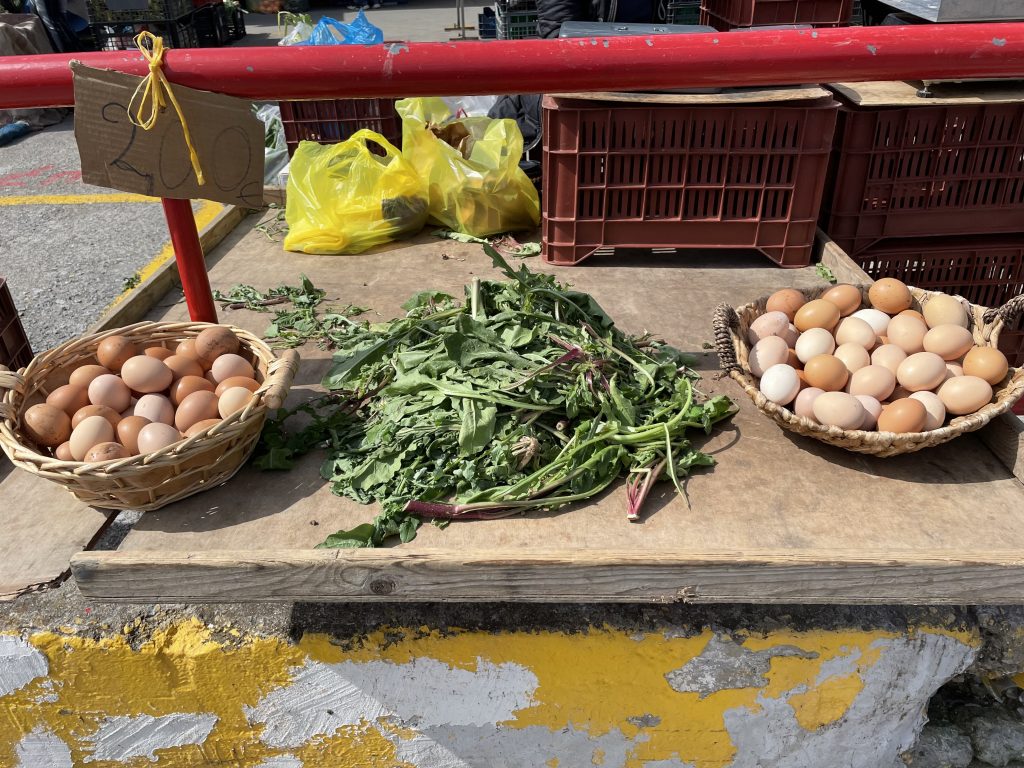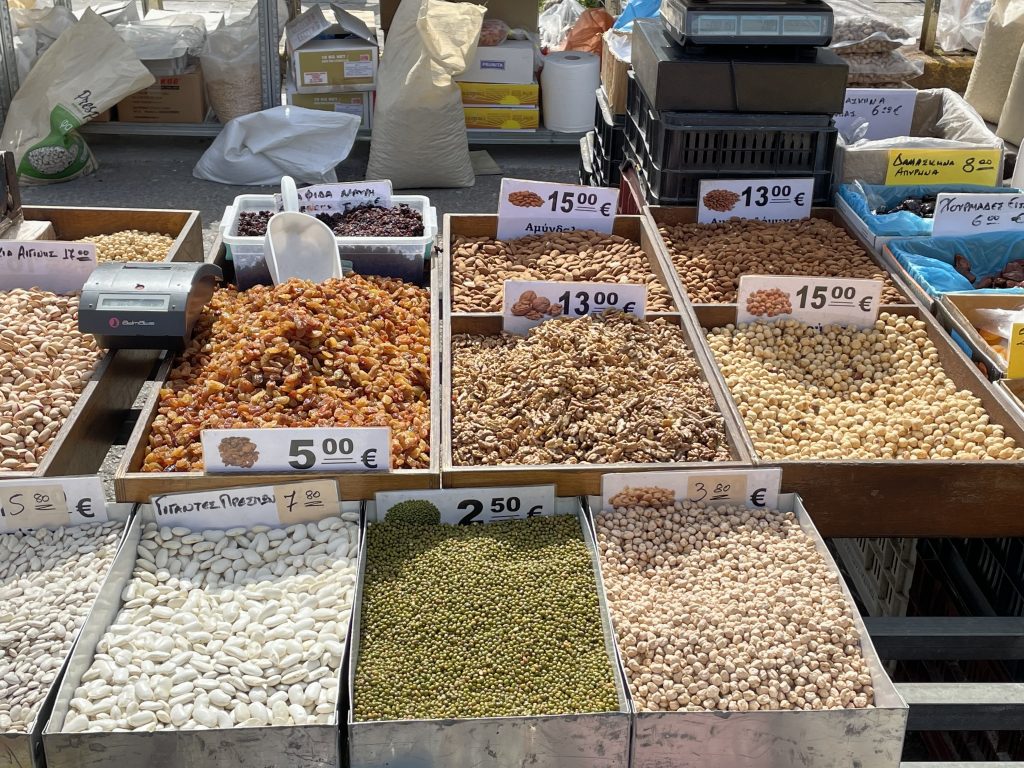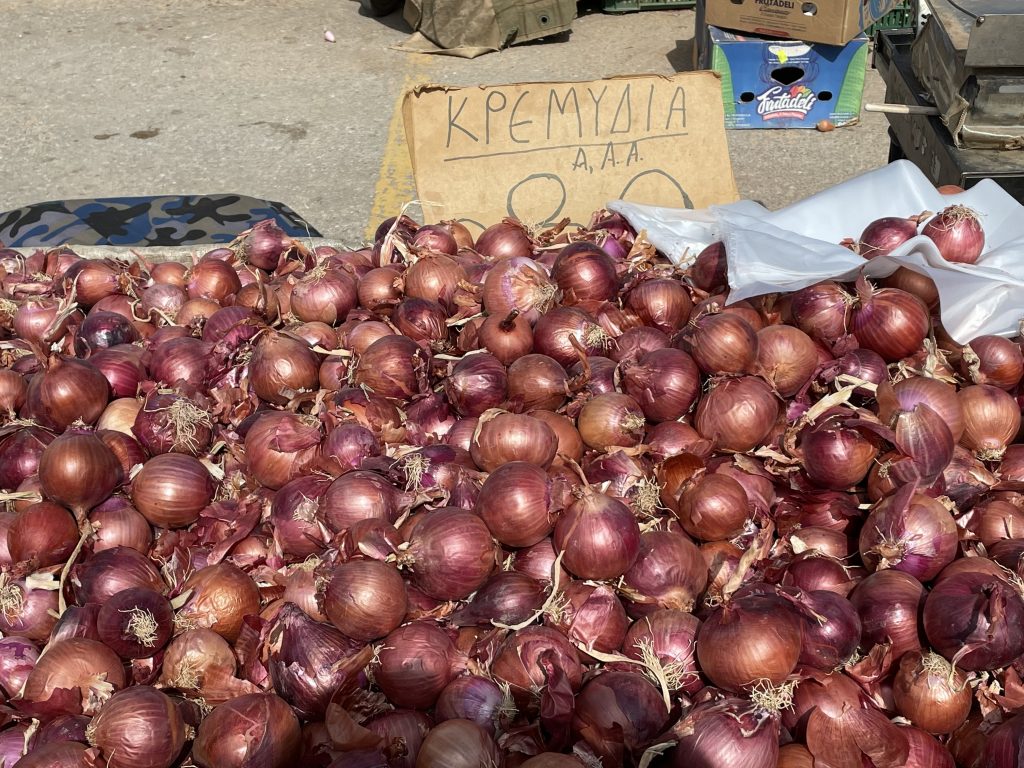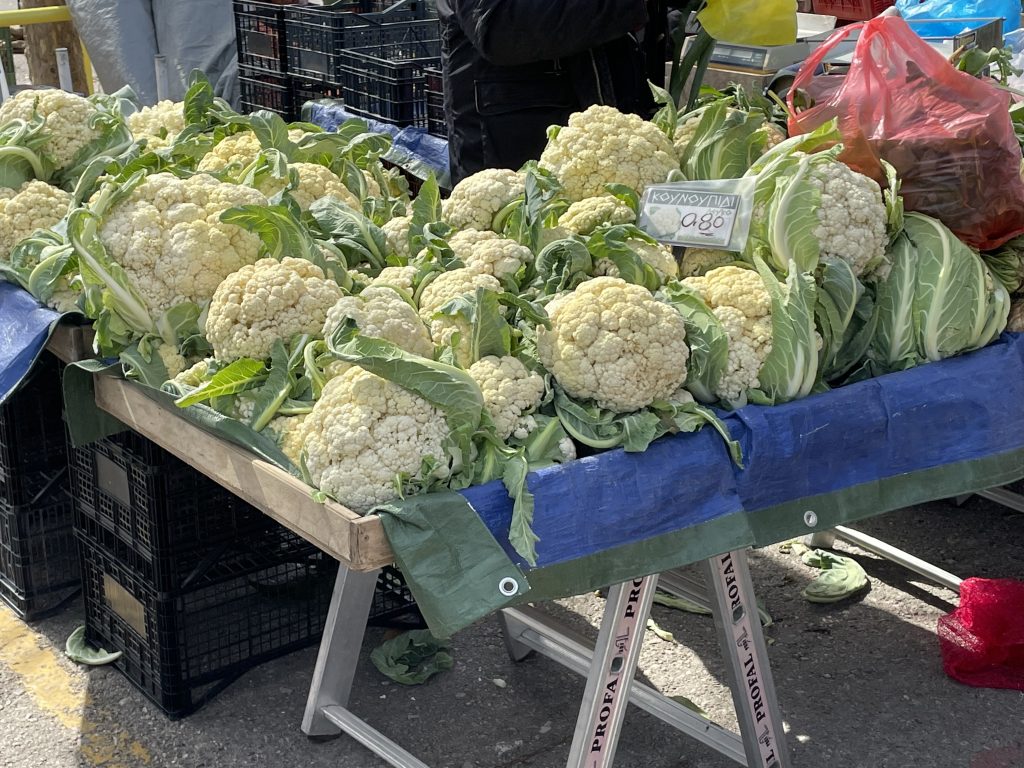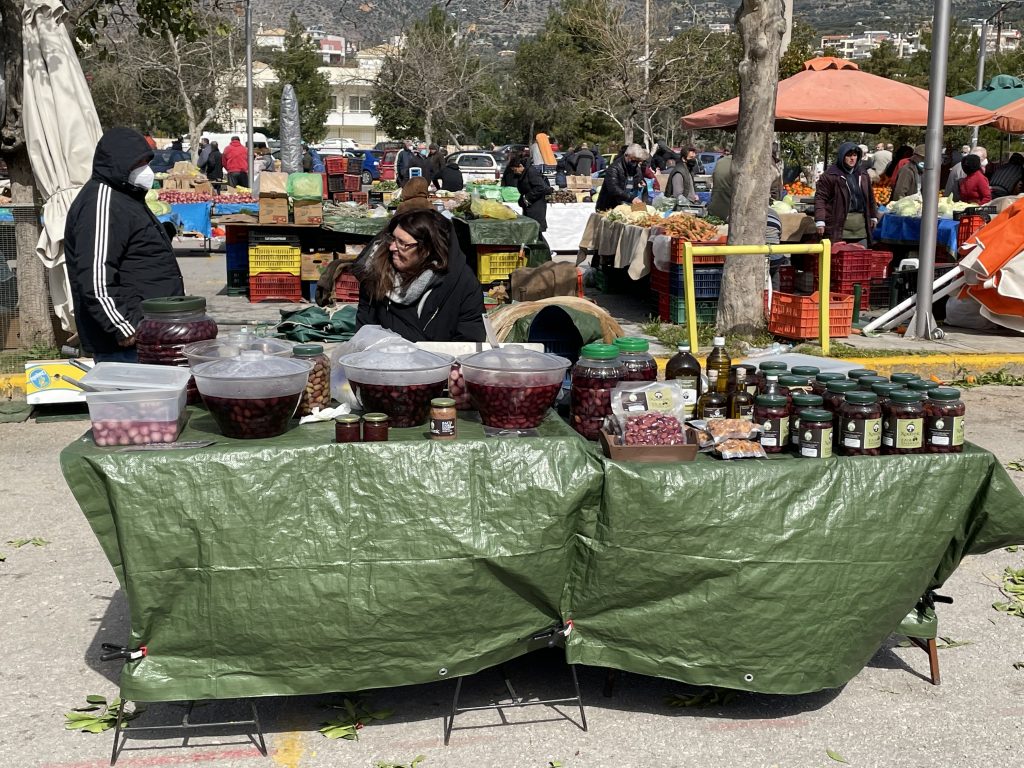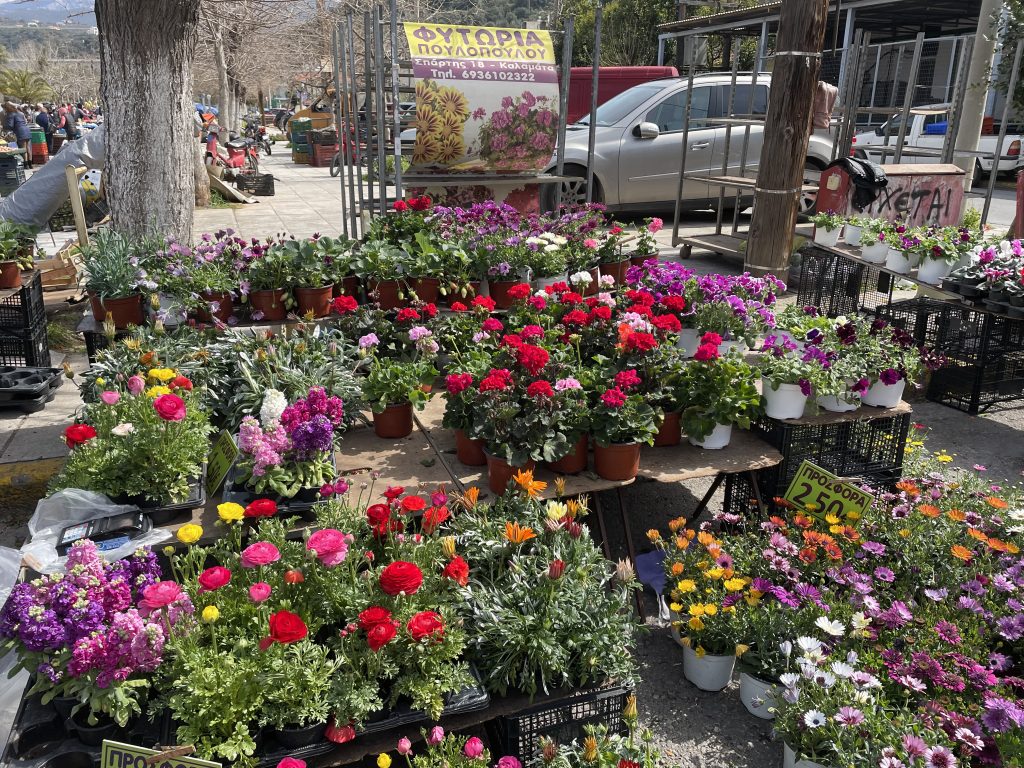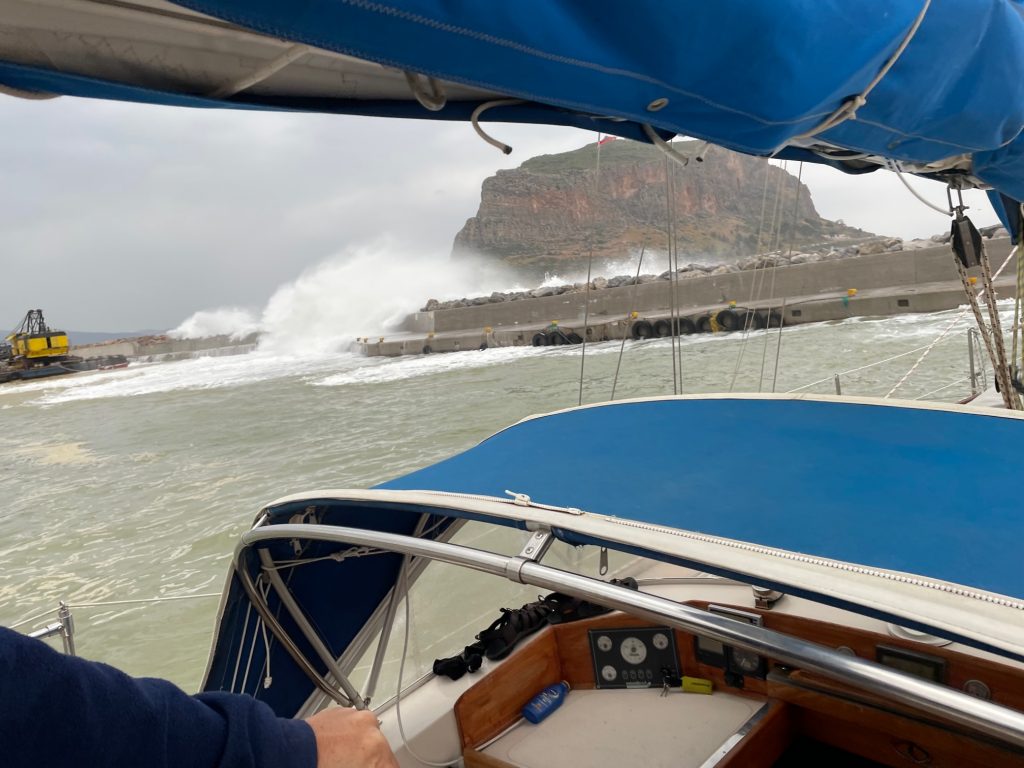
On Good Friday we are still in the port of Monemvasia and busy getting rid of the diesel plague in our tank. Setting off again might not be a good idea anyway. The local fishermen know a lot about the weather. "Big waves will come on Sunday." And they tell us about the big waves three years ago that sank one of the fishing boats in the harbour. That makes a lasting impression. The Coastguard also warns us and advises us to leave the place we reached the day before only under sails at the pier and move to a somewhat safer place. That was very good advice, as it then turned out.
A lot of wind actually comes in the night from Easter Saturday to Sunday. And on Sunday morning the big waves come. A depression to the east of Crete sends them to us. They have already travelled a long way across the open sea. So now a high swell builds up, breaks at the pier and also rolls into the harbour.
In the afternoon it gets really heavy. We guard our fenders, put out a long extra line across the harbour basin to the other side of the pier. The breakers that then came over, and some of them hit us too, are both disturbing and impressive at the same time. One of the three sailing yachts is in distress in the harbour. It was moored in the same place where we had been the day before. Our Scottish neighbour Alexander had his dinghy scorched by a breaker. A motorhome, whose owners are not on site, is moved 15 metres by the breakers and damaged. All the fishermen are with their boats. The fisherman next to us tells us that there is a storm like this every twenty years. Well, our guest Christoph had booked an adventure holiday. So far he can be quite satisfied.
But we would like it to be a bit calmer. Towards evening, the wind calms down a bit, and a little later the swell weakens. But of course we stay on board in a "be on the lookout" position. What an Easter Sunday! But the Greeks don't celebrate Easter until a week later. Maybe we'll still have a chance to celebrate Easter.
